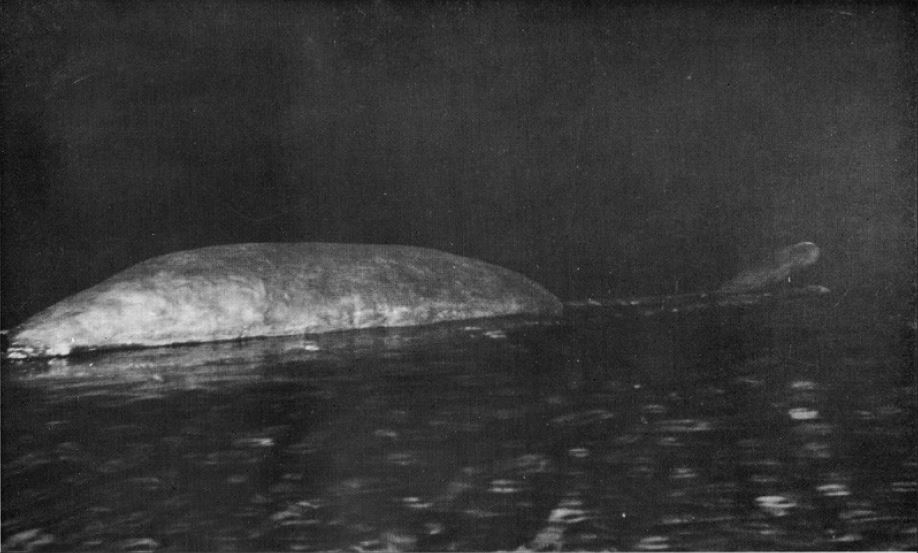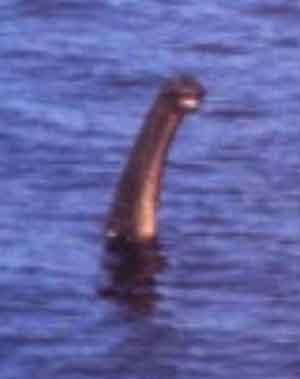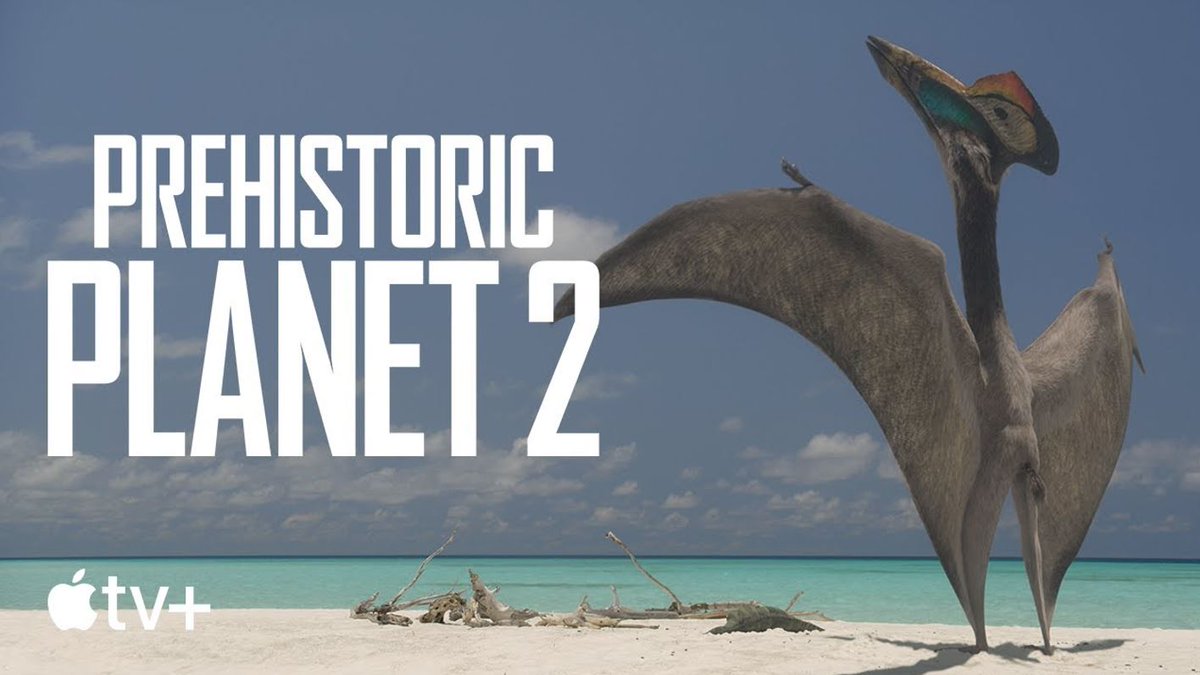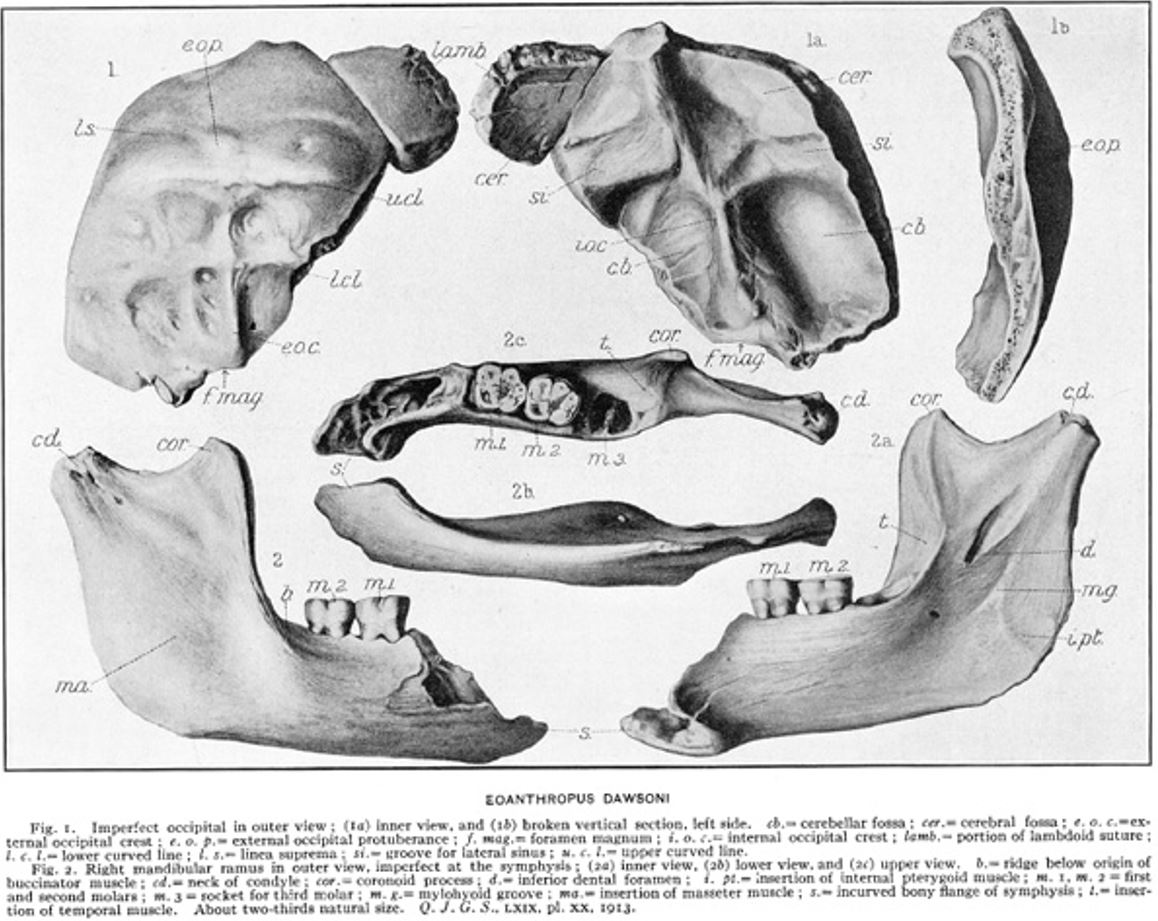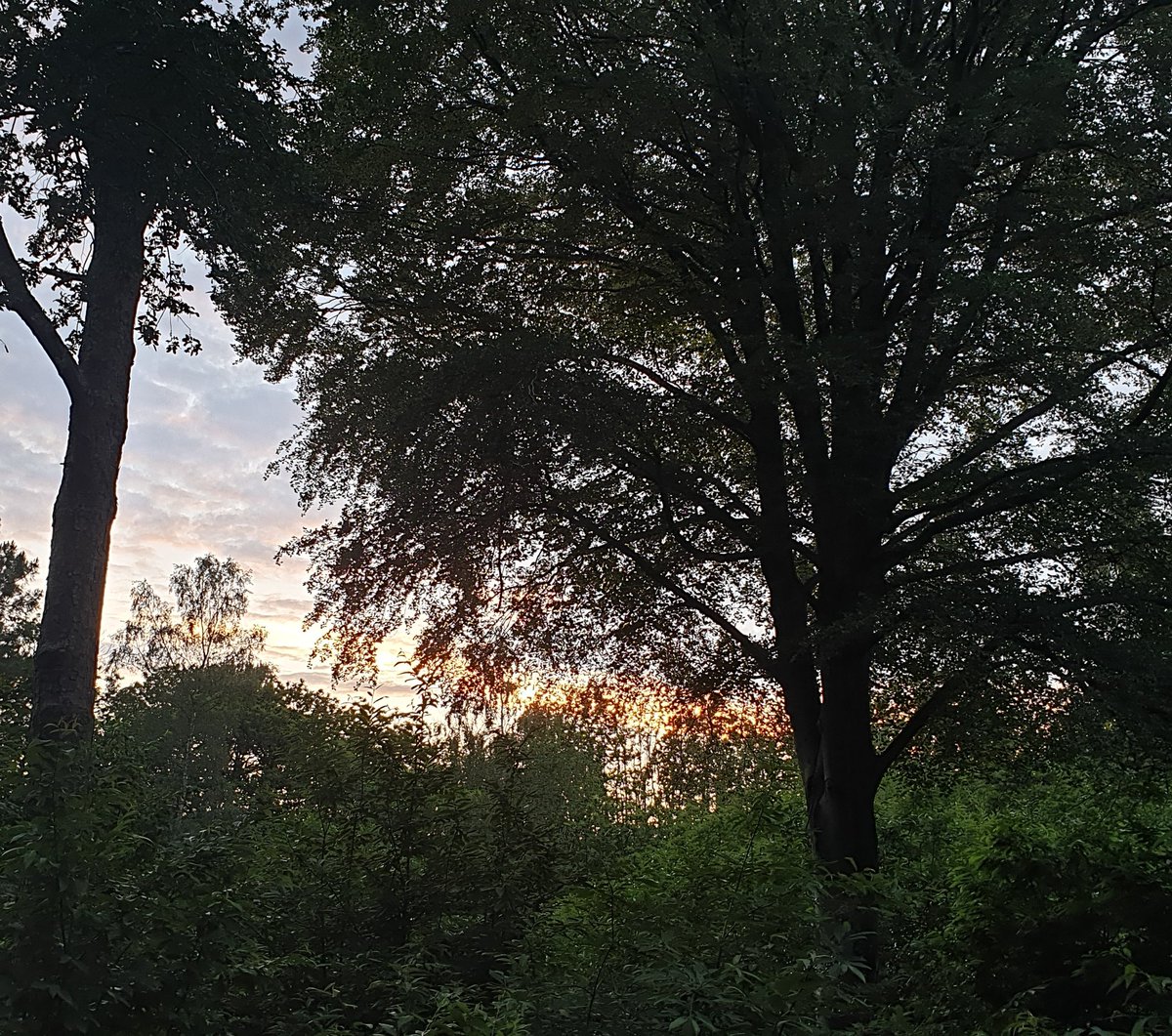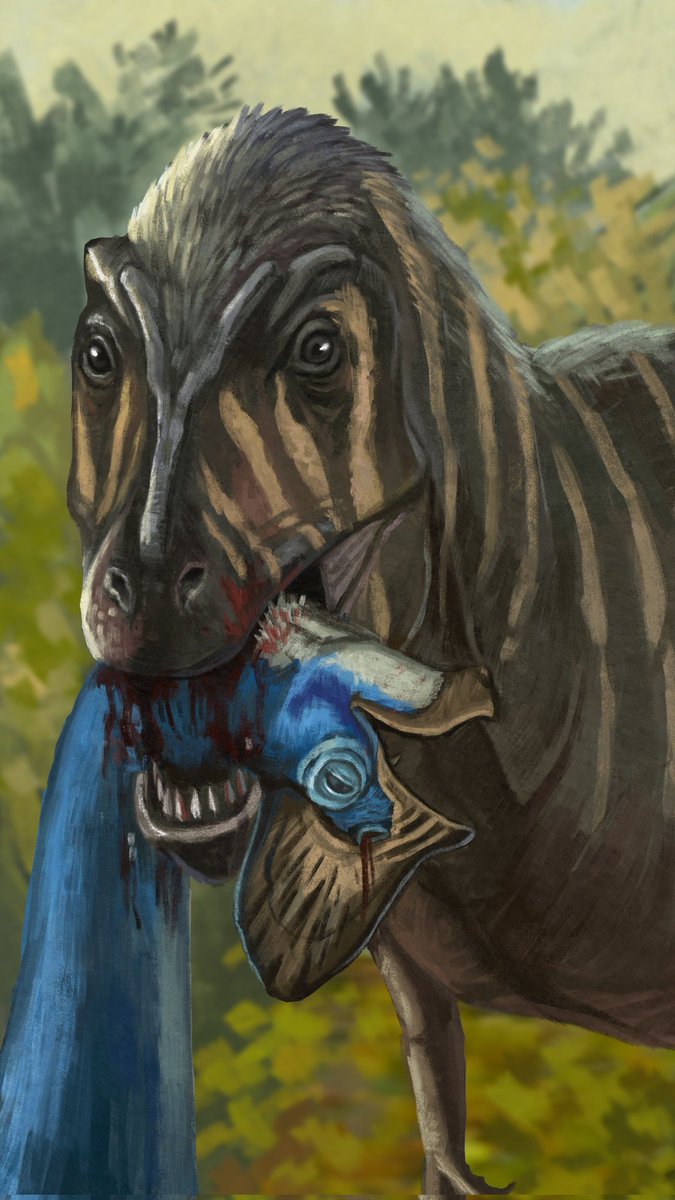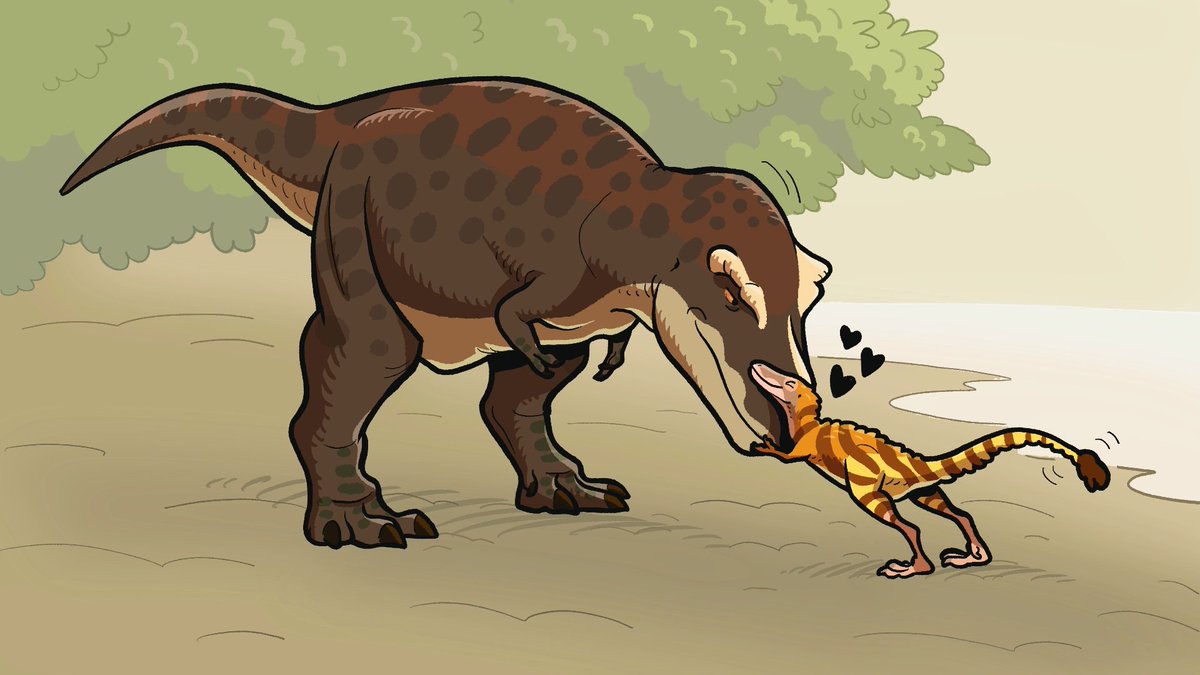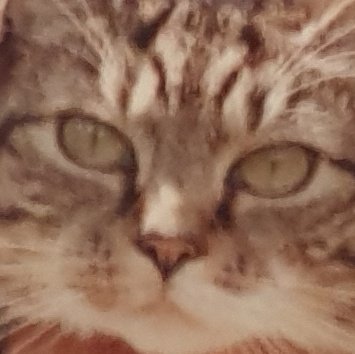Once again it's time to embark on a #PrehistoricPlanet megathread, this time looking at episode 2 of season 2: Badlands. The first thing to note before we get started is that I screwed up in the previous thread, since I said there that Swamps was episode 2... 



Nope, Badlands is episode 2 and Swamps is episode 3. Sorry! The Swamps megathread is here, by the way ...
Anyway…
Anyway…
https://x.com/TetZoo/status/1721938578760982906
#PrehistoricPlanet is streaming now on #AppleTV and represents a highly successful collaboration between #AppleTV and #BBCStudios. A massive team of hundreds of people worked together to bring #PrehistoricPlanet to the screen...
... and it was an incredible experience to work closely with the BBC Natural History team, the outstanding creature design and animation team at MPC, and with so many others...
Badlands has a complex backstory that's entwined with that of the Deserts episode from series 1. In fact, some sequences that ended up in Deserts were initially planned for Badlands, and some sequences that ended up in Badlands were initially planned for Deserts. 

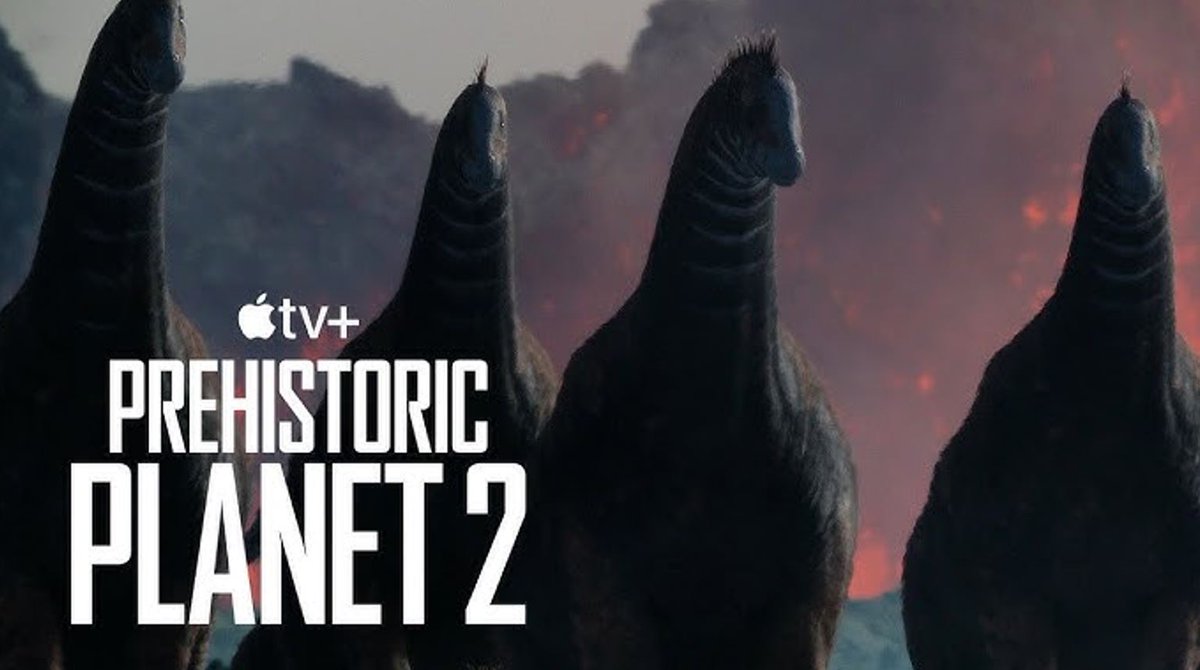

Remember that the titles of episodes in a series like this are never intended to be technically rigorous. They're basically the best and snappiest 'catchalls' we could come up with.
Badlands opens with a sequence depicting the nesting behaviour of the remarkable Indian titanosaur Isisaurus. First named in 1997 (initially as a species of Titanosaurus) and not given its own genus until 2003, Isisaurus is an unusually proportioned sauropod... #dinosaurs
... with tall shoulders, proportionally long forelimbs and a robust, deep neck. #dinosaurs #sauropods #PrehistoricPlanet 




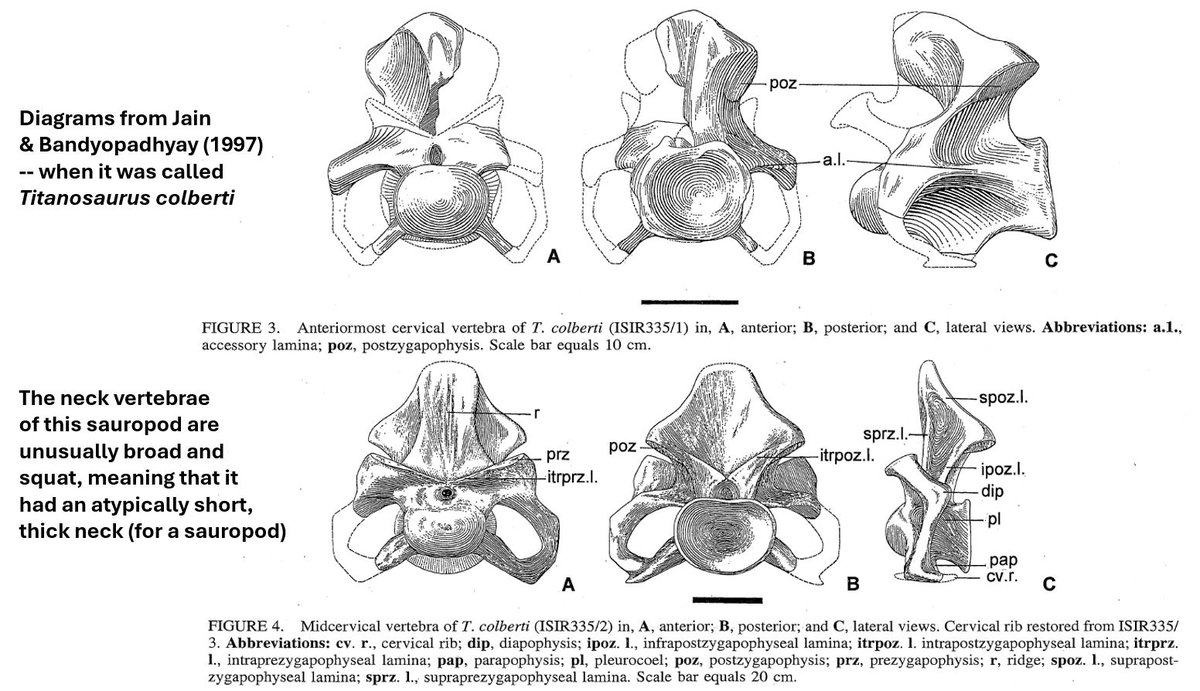
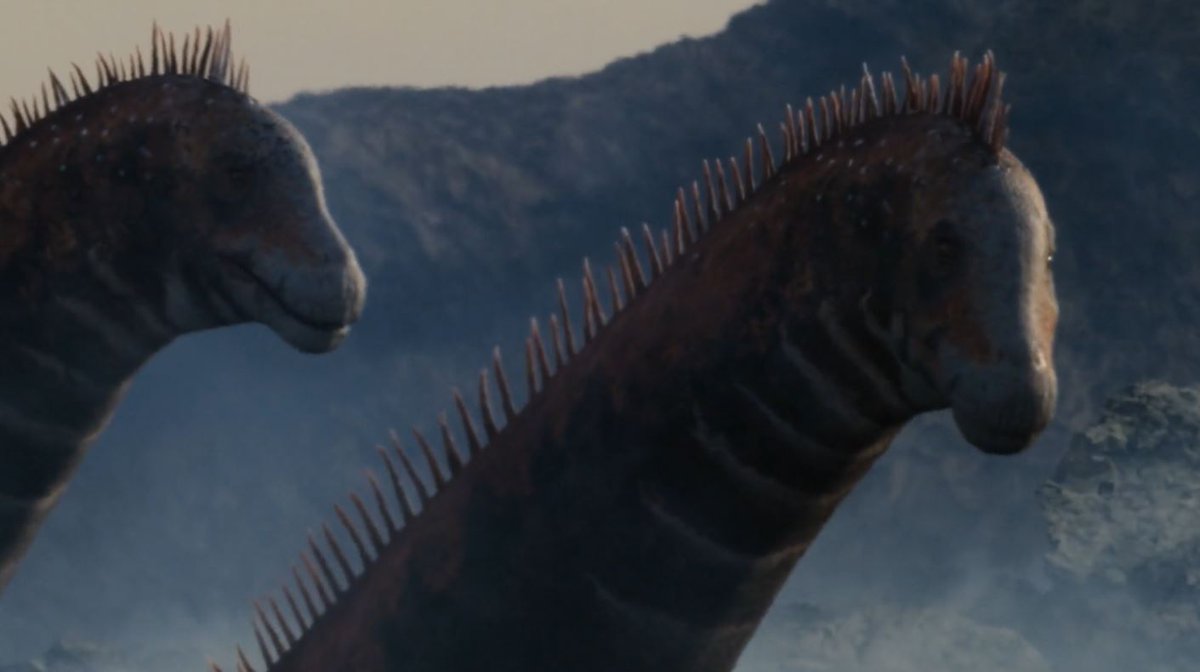
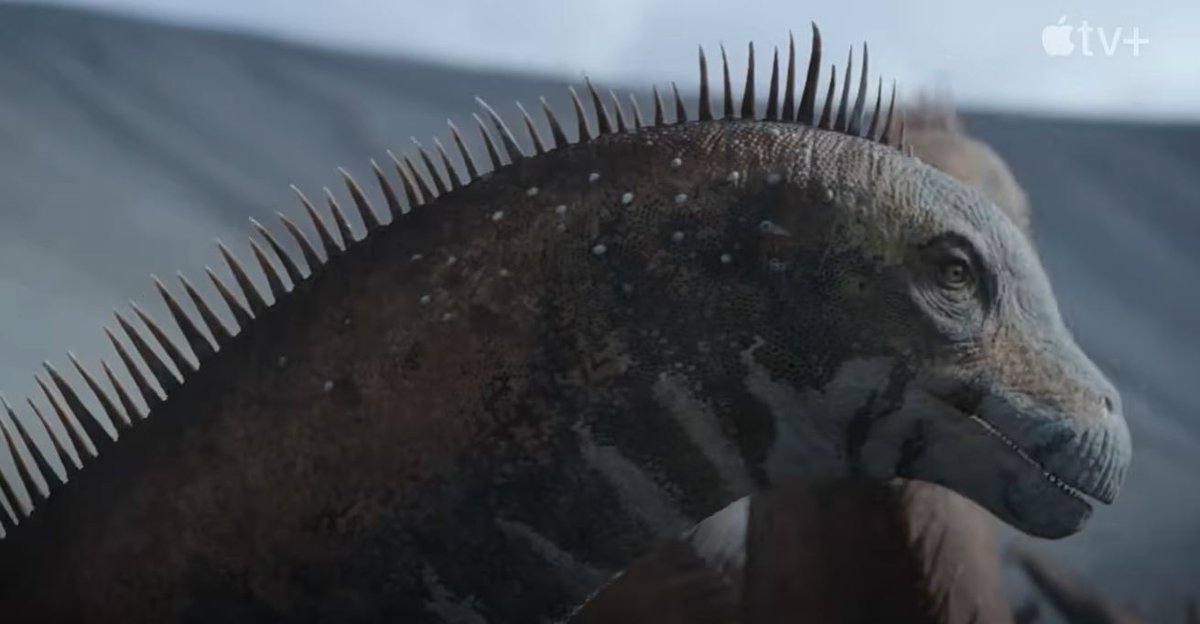
Our Isisaurus is one of my favourite #PrehistoricPlanet designs: the iguana-like dorsal spines (which are speculative but inspired by spines known from diplodocids) totally suit it, and I think that the orange, white and brown striping and mottling looks phenomenal… 

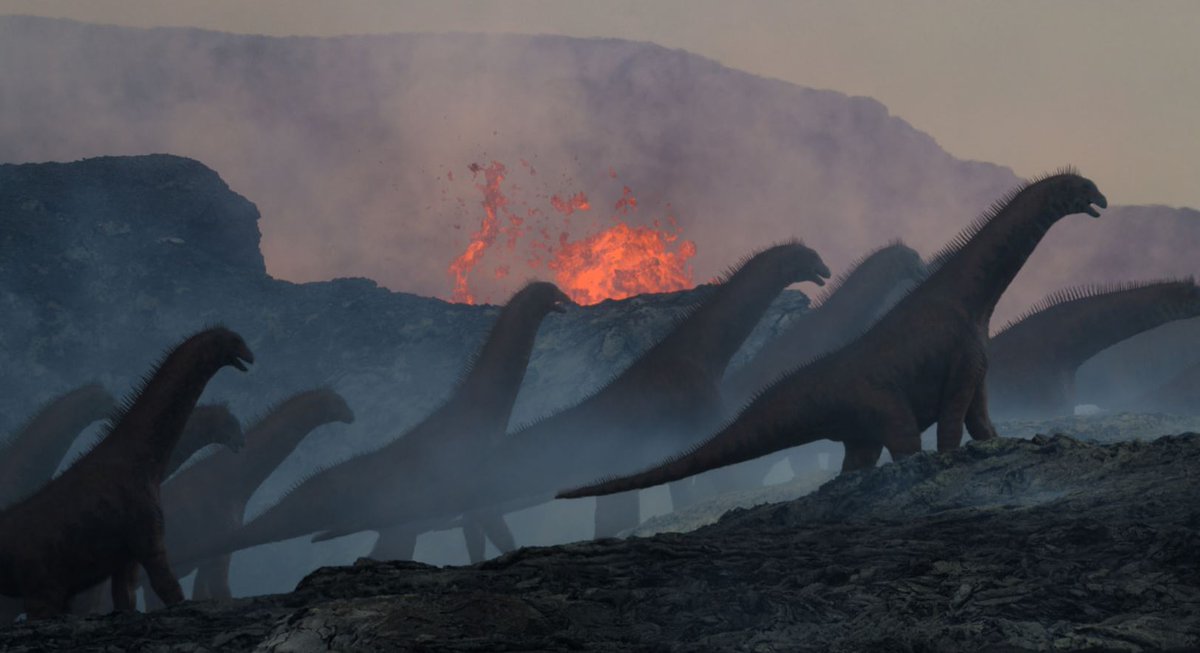
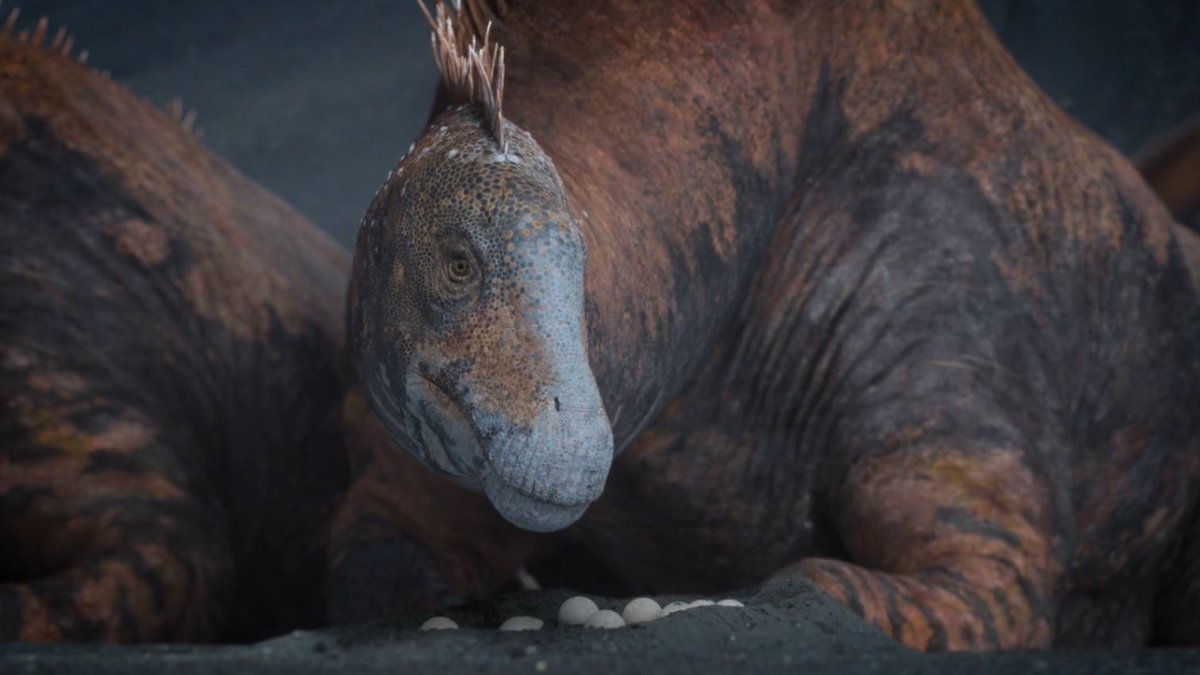
This is my design, of course made photoreal by the incredible MPC team.
We see an Isisaurus group walk through the volcanic landscape of the Deccan Traps of India (the actual landscapes were filmed in Iceland). Volcanic vents release steam and noxious gas, layers of cooled lava form the surface of the ground, and... 
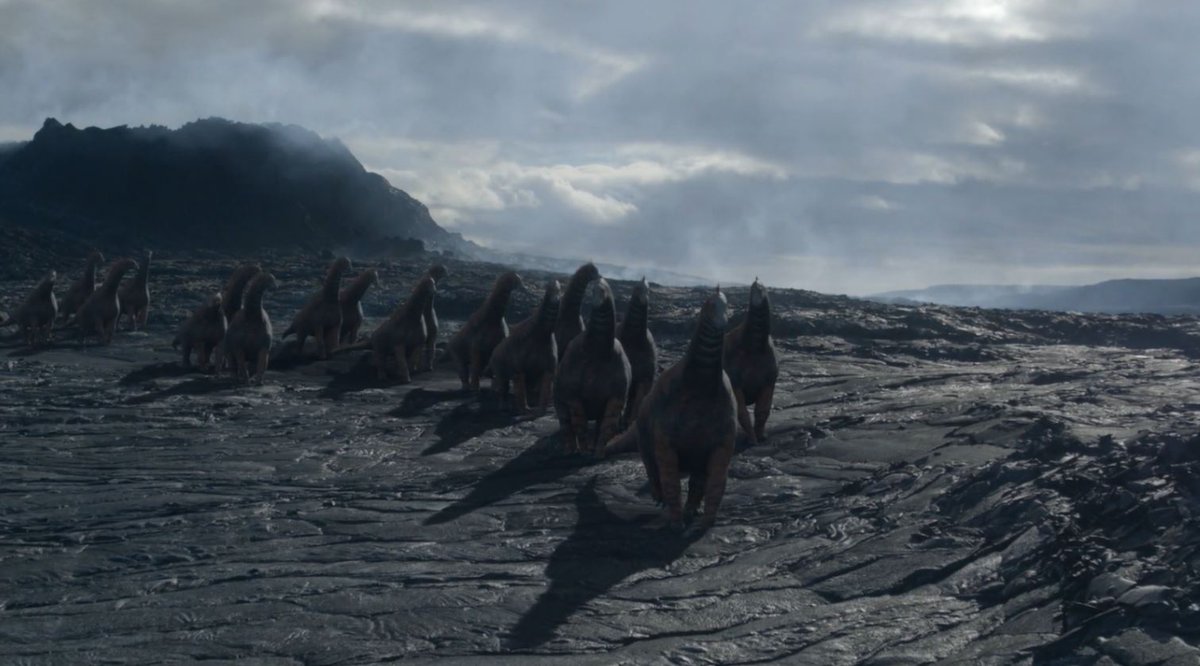
... molten rock pours and explodes from the flanks and cones of volcanoes. A 'bad land' indeed. #Dinosaurs of several species – certain theropods and sauropods among them – occurred in the immediate area, but likely weren't present when volcanism was most active.
In fact, evidence for their occurrence (bones, eggs and tracks) comes from the 'intertrappean' beds (those sediments deposited in between periods when great quantities of lava were extruded).
The number and distribution of eggs in the region shows that dinosaurs of several species were visiting it habitually, over centuries.
And, indeed, we're showing the animals visiting the region in order to lay their eggs in a safe environment: a place where they can take advantage of geothermal heat. Direct evidence that at least some Mesozoic dinosaurs did this is known from several locations worldwide...
... and this method is also used by some birds today (namely the Maleo of Sulawesi). We compiled so much info on sauropod nesting behaviour and nest form. Here are a couple of images from the _many_ documents that researcher Catherine Klein and I assembled on this subject. 




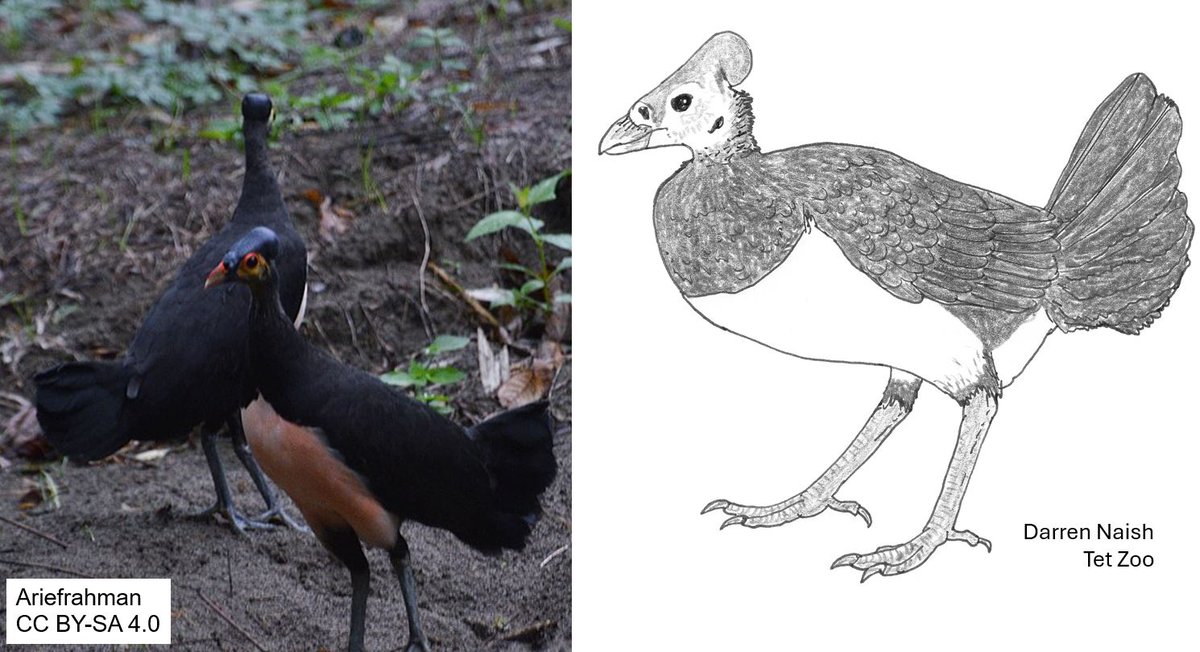
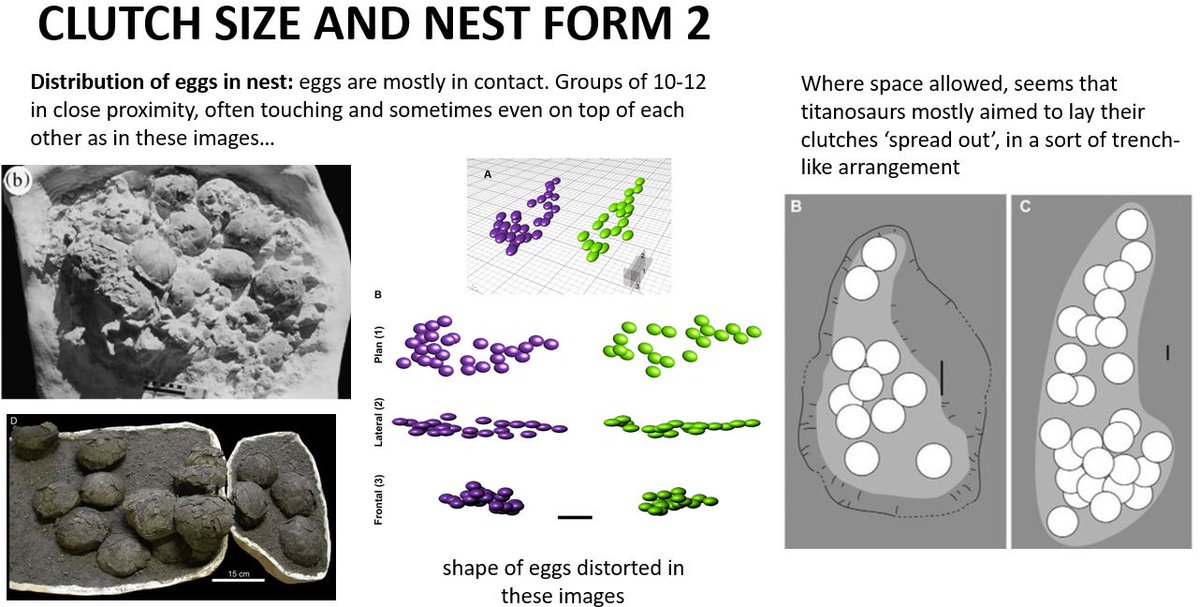
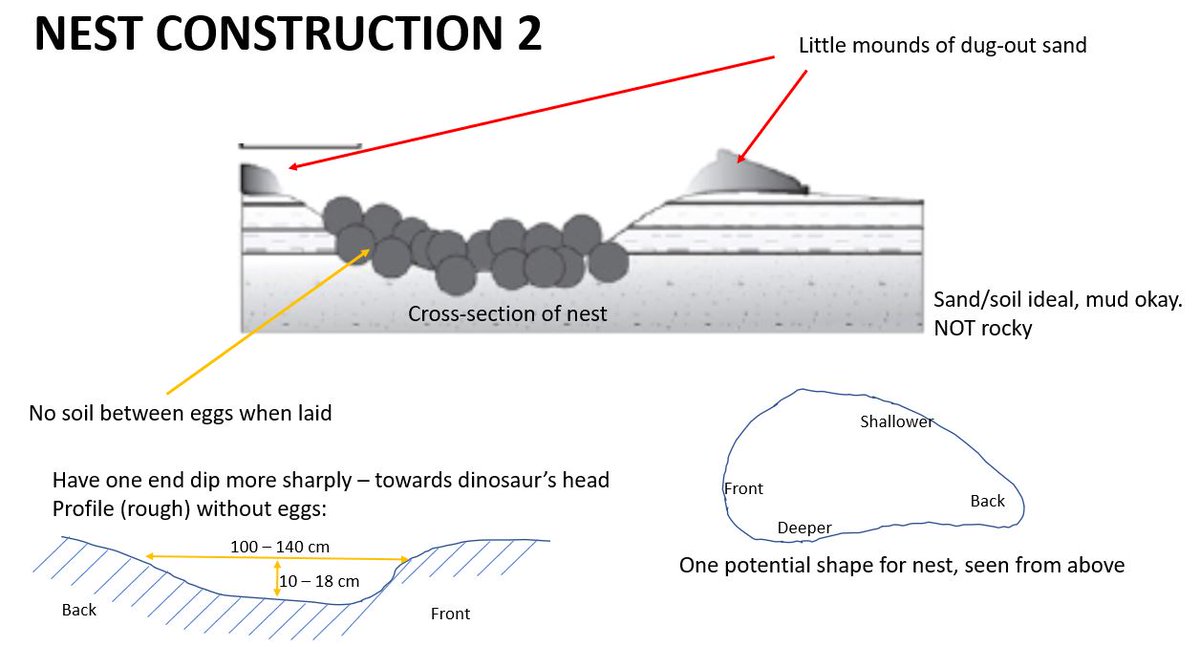
Another danger present in this environment concerns the noxious gases mentioned above. We might take seriously the idea that tall animals like sauropods were better able to deal with this problem than dinosaurs closer to the ground, and an interesting speculation is...
... that sauropods could then take advantage of the (relatively) predator-free nature of volcanic environments. But what about their small hatchlings? #PrehistoricPlanet #dinosaurs 
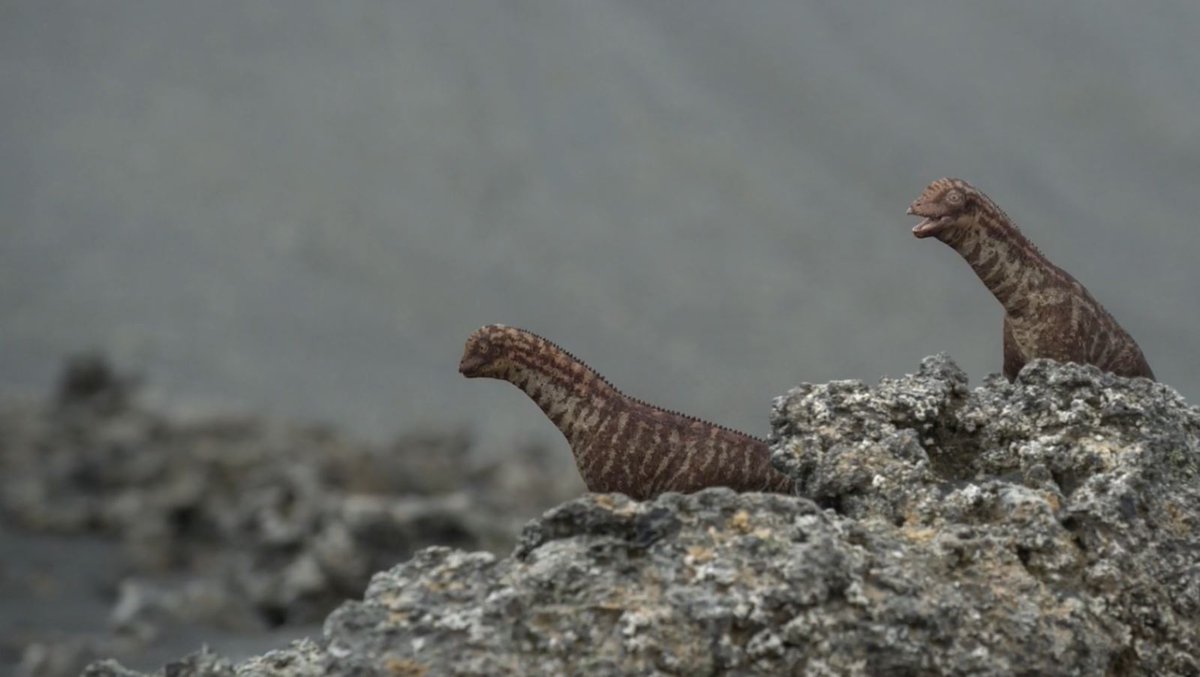
The story originally planned for this sequence – devised by producer and writer Nick Lyon – was complex and explained how the sauropods used shifting weather and changes in wind direction to their advantage, these changes meaning that...
... any toxic gases would have been cleared for part of that year when the babies would have emerged. This was devised following collaboration with Deccan expert Mike Widdowson.
As so often happens with TV, the complex science and extensive consultation that goes into these sequences is not explained or outed in the final product – it's all part of the black box – plus it proves too complex and long-winded to work into the narration, alas.
The episode then moves over to the Gobi Desert of Mongolia where we observe a family group of Velociraptors whose young juveniles are kept safe in the side passage of a canyon. The babies are extremely cute and shown huddling together. 

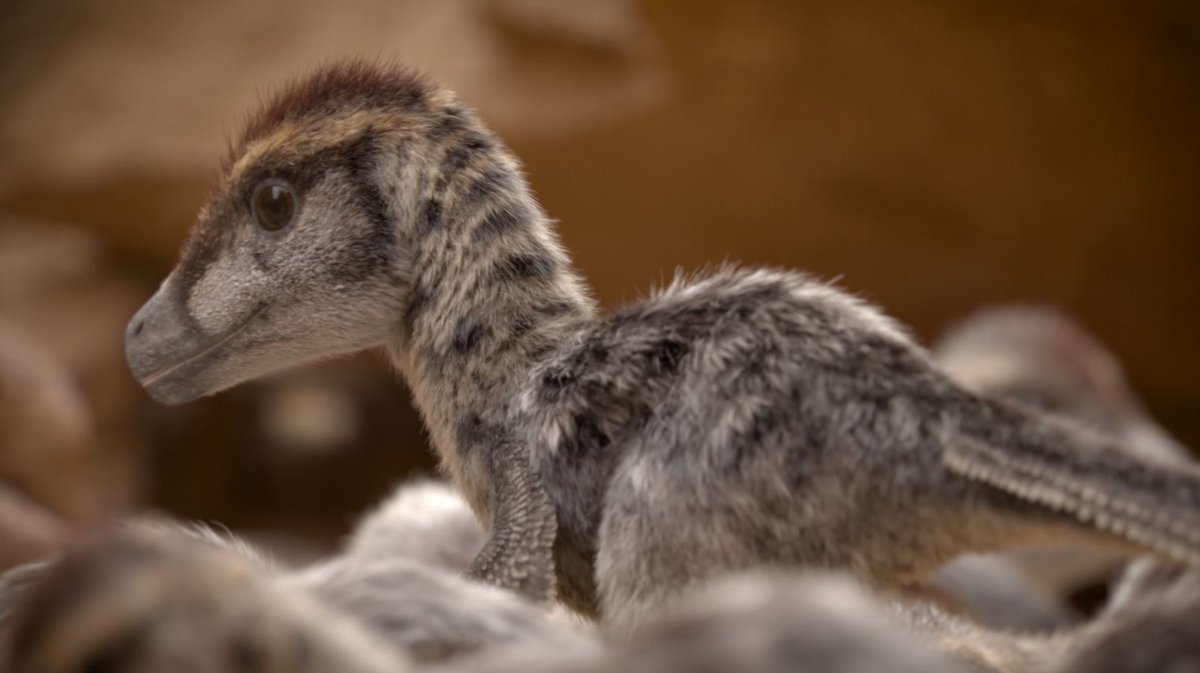
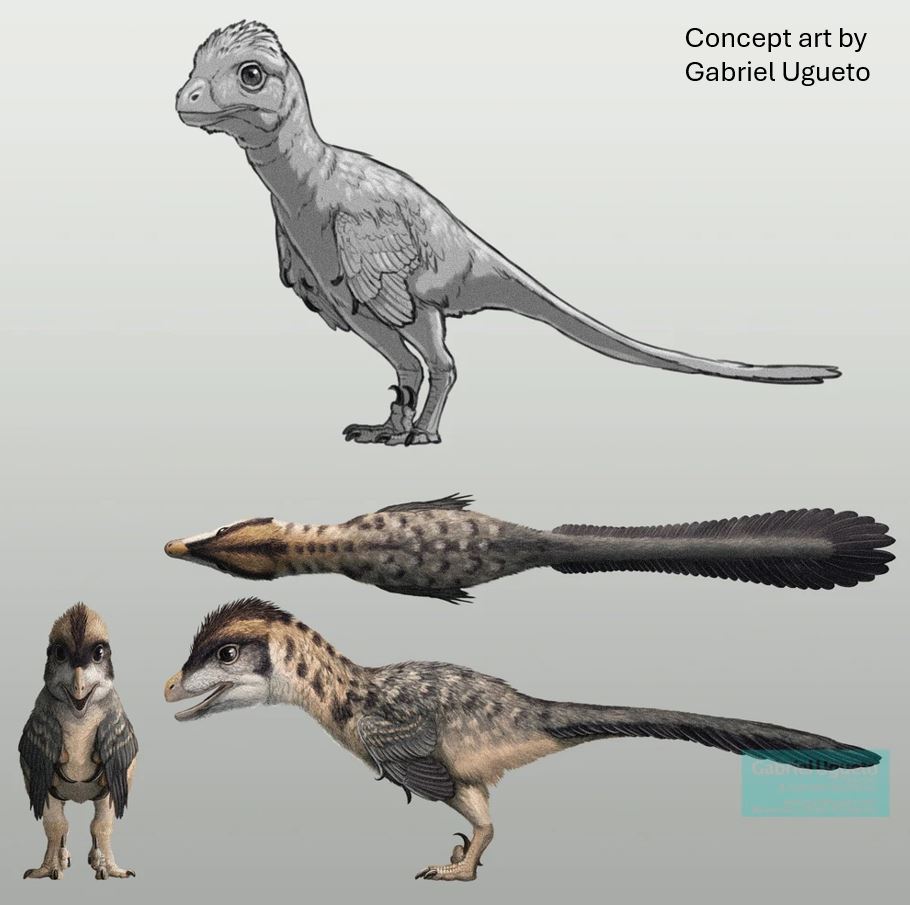
This behaviour is inferred from fossil maniraptorans (young specimens of the oviraptorosaur Oksoko are preserve huddled together) and of course is known from living maniraptorans too (that's birds). #dinosaurs
A point of discussion throughout the making of #PrehistoricPlanet was that the animals termed #Velociraptor was never really intended to be Velociraptor at all. As I've said in previous threads, Velociraptor itself might not have been alive in the Maastrichtian, but...
... close relatives certainly were, and our thinking was always that we were depicting 'Velociraptor-like velociraptorines' that have yet to be given useable taxonomic monikers. Of course, the nature of TV shows means that there's no opportunity to say any of this, but... 
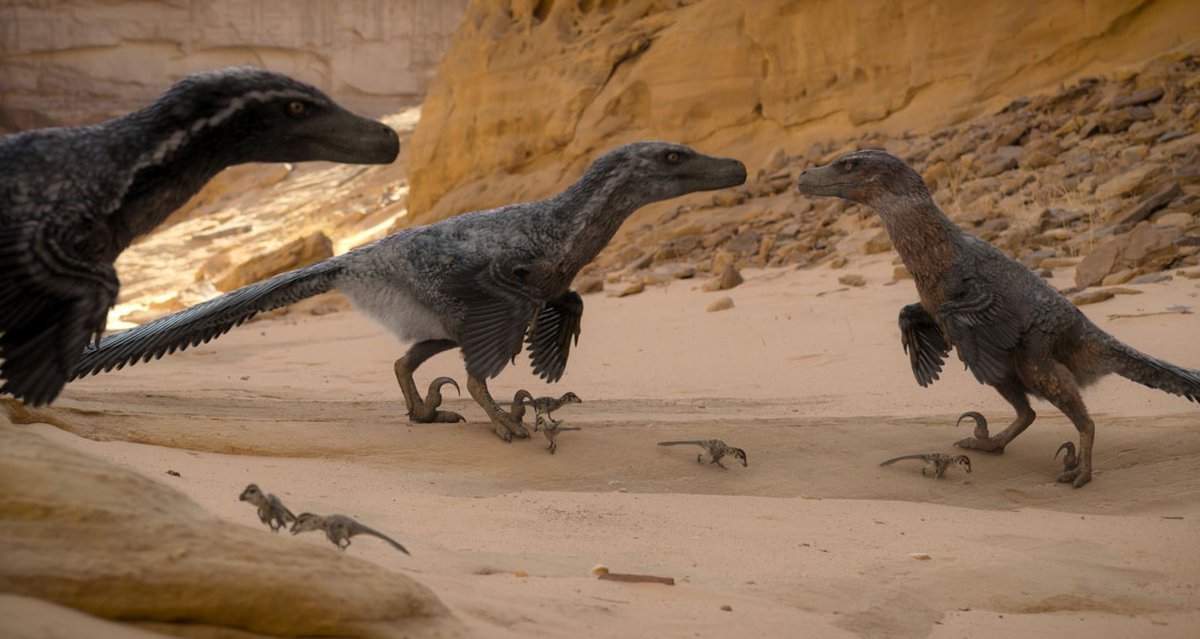
... I'm pleased that fans of the series have mostly been sympathetic to our situation. Some short distance from the canyon, we learn that a mixed herd of sauropods and the pachycephalosaur Prenocephale are heading this way in quest of water.
The #sauropods represent Nemegtosaurus – named for its skull, one of the best-preserved and most intensively studied titanosaur skulls (a replica we had made is shown) – and a second, much bigger animal known only from a footprint, and informally termed the 'Mongolian titan'. 

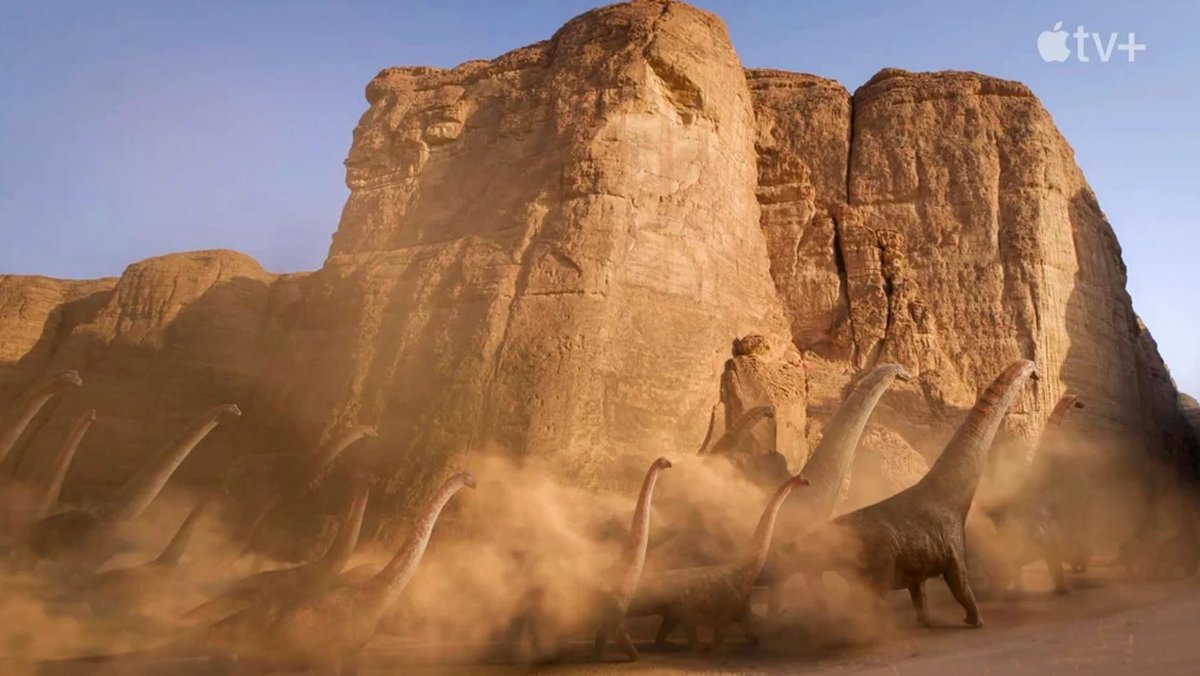
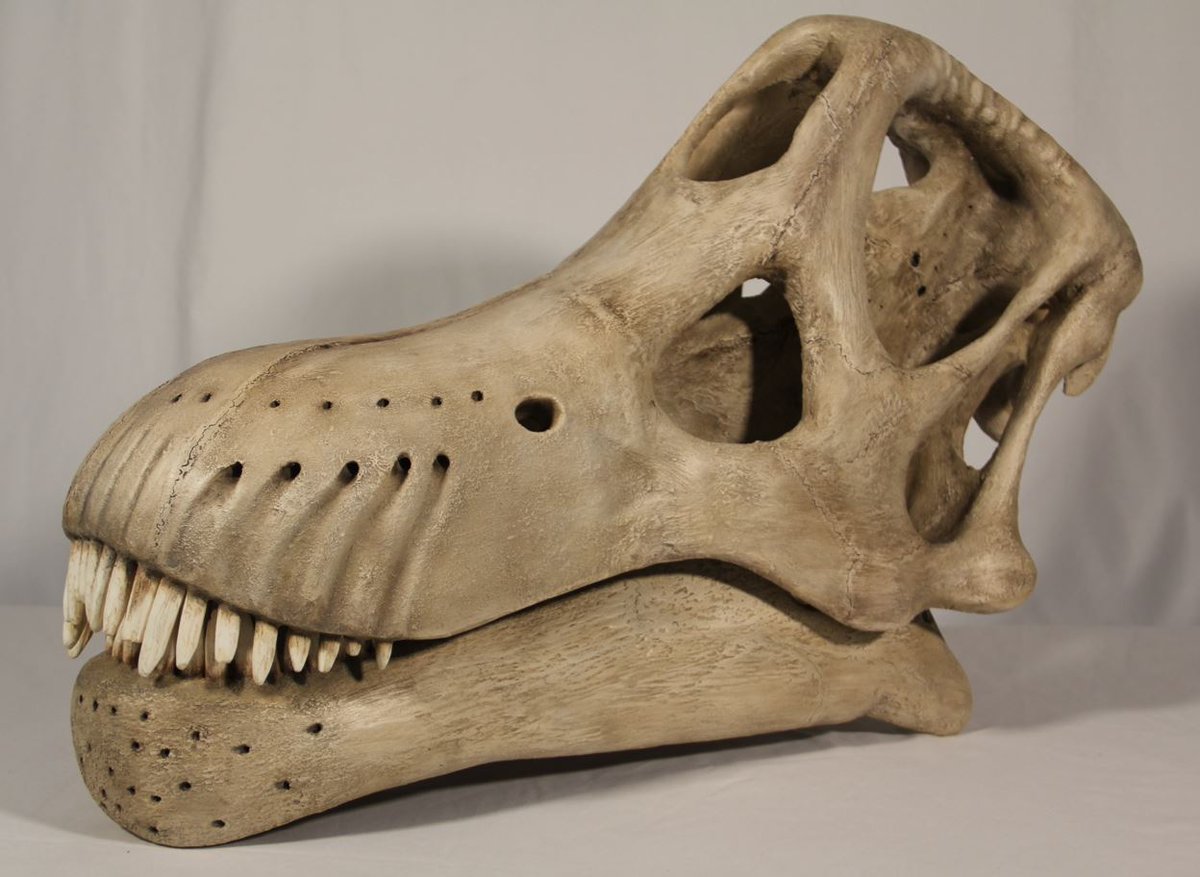
I covered the 'Mongolian titan' in the season 1 Deserts thread. This animal is inferred to have been of Argentinosaurus-like size – perhaps 70 tonnes or so – and is likely a distinct species that's not yet known by skeletal remains. #dinosaurs 
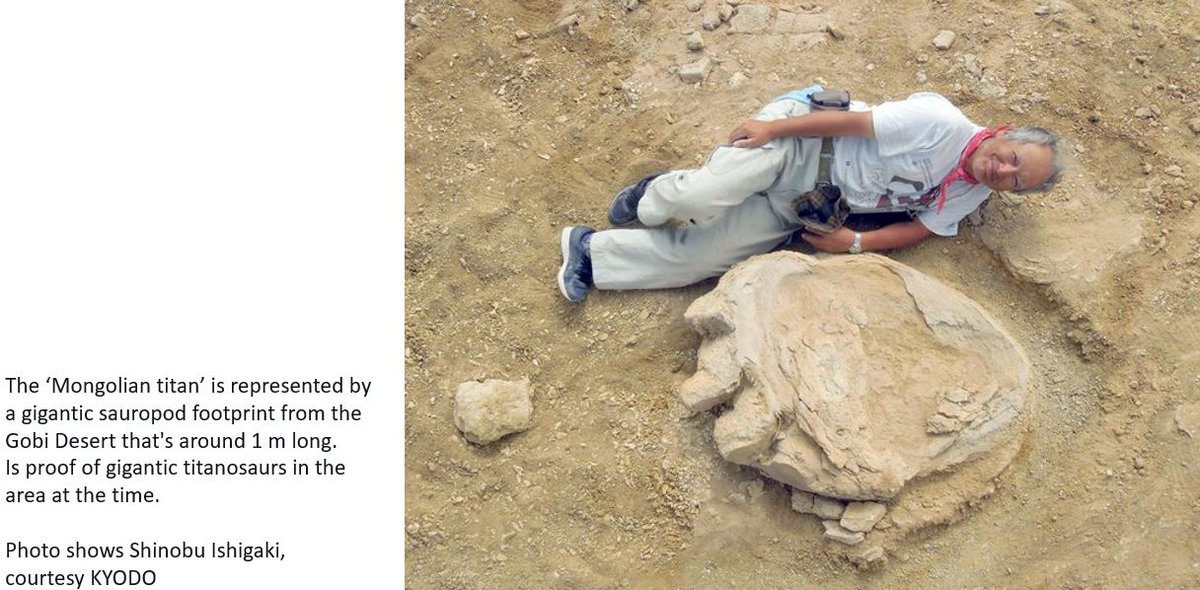
We did not recycle our other big titanosaur models but depicted this as a distinct animal, with a desert-adapted livery but blue striping across the face and upper part of the neck. 

I'm an advocate of the idea that #sauropods likely used the neck in display (it would be visible across distance and is in keeping with their good eyesight); concept art gave this animal inflatable neck sacs recalling - but different from- those of Dreadnoughtus of season 1. 
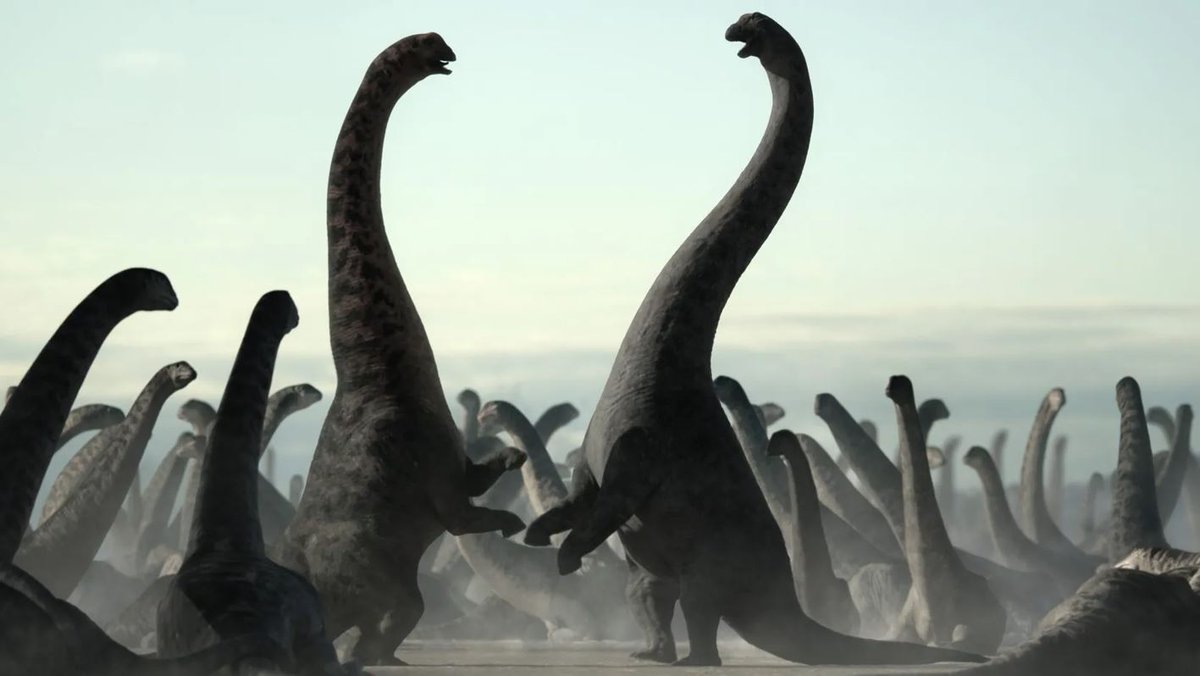
Note also that our #sauropods all habitually walk with elevated necks, the neck angle during normal locomotion being somewhere around 40-50 degrees relative to the horizontal. All these claims about sauropods having low, semi-horizontal necks are based on faulty arguments.
It was important that the giant titanosaur here be termed the 'Mongolian titan' to mark it out as a separate species from the other titanosaur in the sequence, Nemegtosaurus. But things got changed in the script and so it was referred to as the 'Mongolian titanosaur' in error…
Also important in this sequence is the giant tyrannosaurid Tarbosaurus. I've already discussed the look of the #PrehistoricPlanet Tarbosaurus in my thread on the Deserts ep from season 1. 
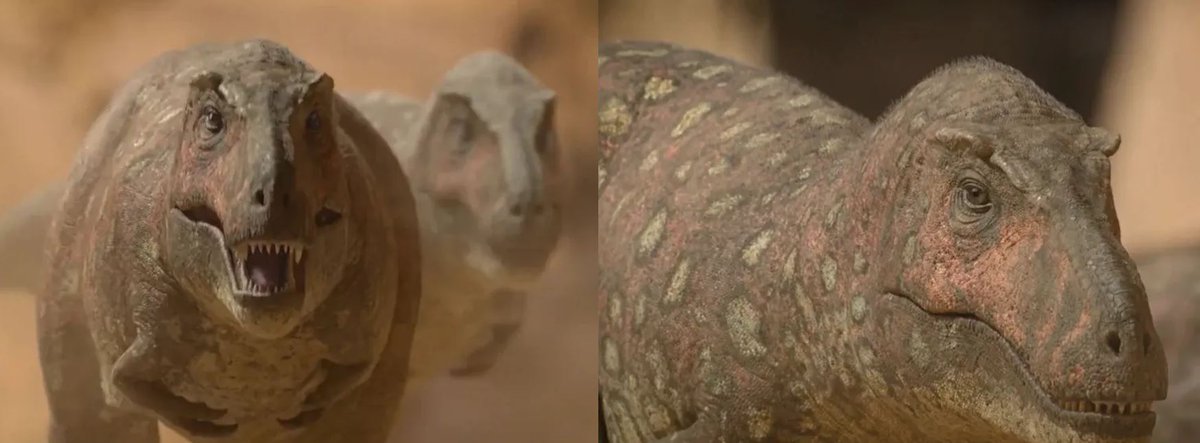
It has a colour scheme inspired by modern, desert-dwelling reptiles, has sparse, filamentous feathers and has a shallower, differently shaped head from its robust cousin T. rex. Here's a #PrehistoricPlanet tyrannosaur montage that someone compiled... 
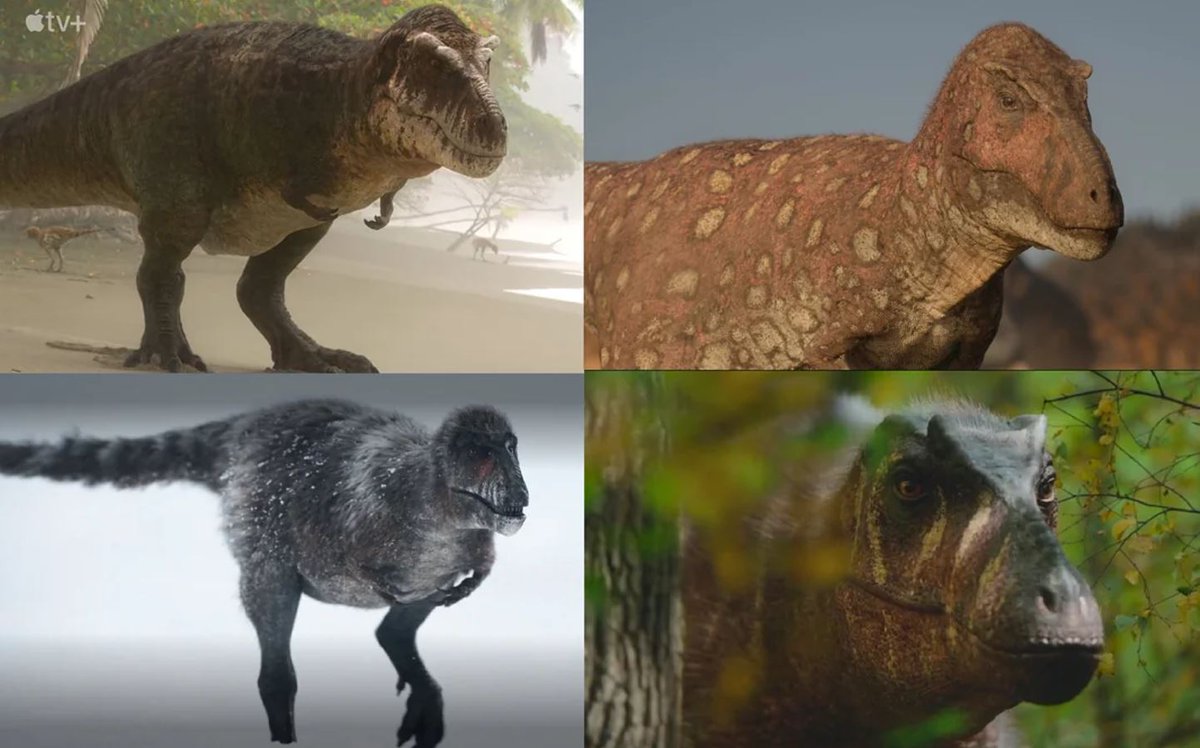
We show the tarbosaurs moving in a group – something supported by evidence from tracks and from the discovery of specimens in close association – and also show them deliberately making noise to confuse and panic the sauropods...
That's not a fictional piece of behaviour but is known in living predators: leopards and various predatory birds (some hawks) have been reported to make calls that result in confusion or the flushing out of potential prey.
While we always planned to show tarbosaurs killing a sauropod, the big problem in making a family-friendly show like this is that we're limited on violence, gore and bloodshed...
Nick initially wanted a tarbosaur to do a BLOOD SHAKE after sticking its head and neck inside a carcass… based on the lion sequence used in the Painted wolf ep of #Dynasties (photo by Nick Lyon), but that's just a nope… 
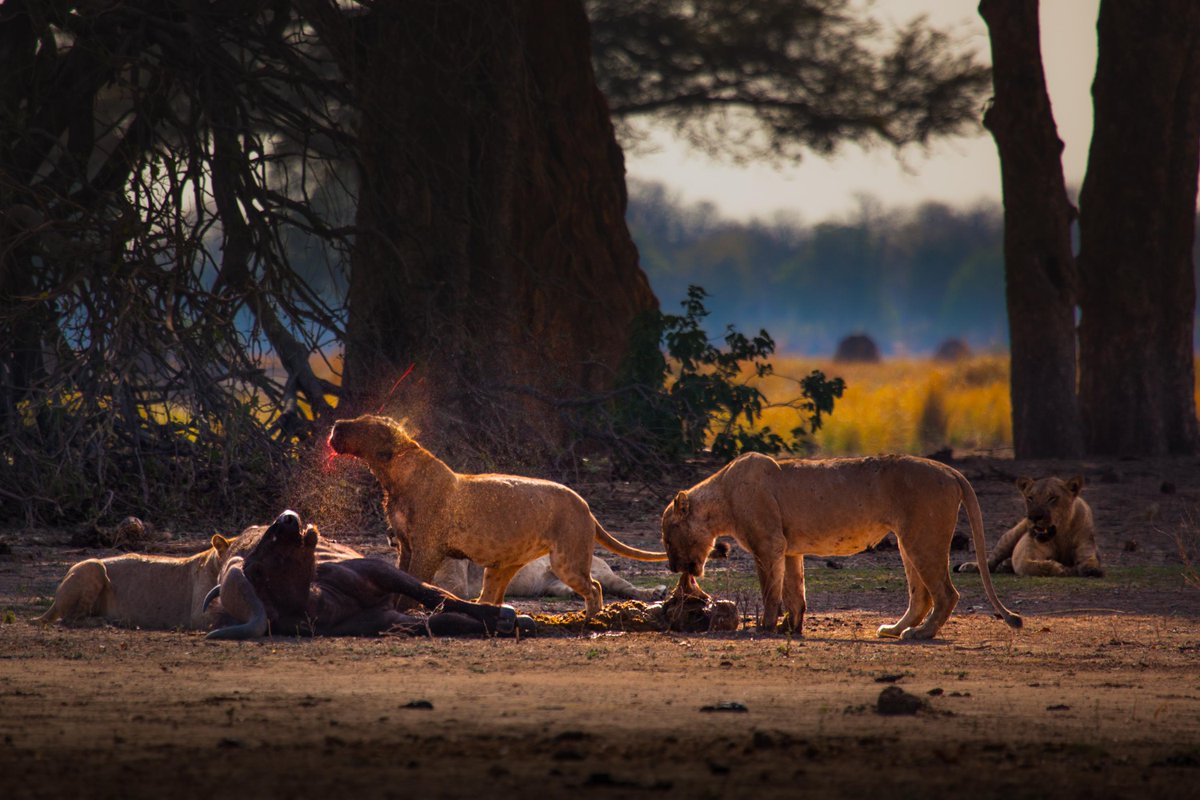
Likewise for what I wanted: the tarbosaurs grabbing a titanosaur, ripping chunks from its side, and causing it to die from slow blood loss. We just couldn't go with that. So we ended with an accidental death caused by panic and falling…
Meanwhile, we show the Prenocephale running across a slope, pursued by velociraptorines. Dinosaurs that lived in rocky places like the one we show were likely good climbers, good on slopes, and in the habit of using elevation to escape enemies, or to ambush and kill prey. 


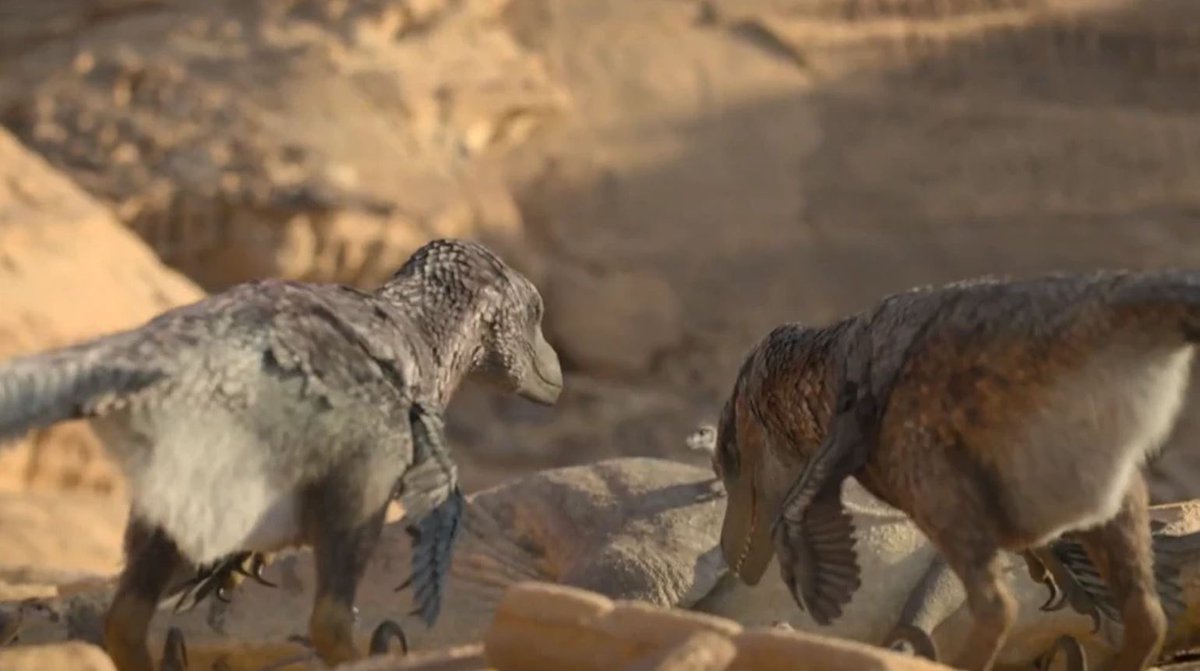
What we show here wasn’t so much connected to the old, traditional idea that pachycephalosaurs were 'mountain goat dinosaurs' of high hills and terraces, but more connected to the Saudi Arabian landscape where we did our filming.
Our velociraptorines co-operate in a manner that's widespread in extended families among #dinosaurs today (certain eagles, falcons, owls and so on), and they set up an ambush that results in a Prenocephale falling to its death…
We came up with several ideas on how that might happen (we looked at snow leopard, puma and Golden eagle predation in particular) but, again, ultimately reigned things in on the spectacle of death and on what animals look like when they fall from height… because oh boy. 

The next sequence is again set in the Gobi Desert, but instead depicts aspects of nesting and predation we haven't seen before. The main character is the large oviraptorid Corythoraptor, an animal actually from Guandong, southern China, and not from the Gobi Desert at all. 

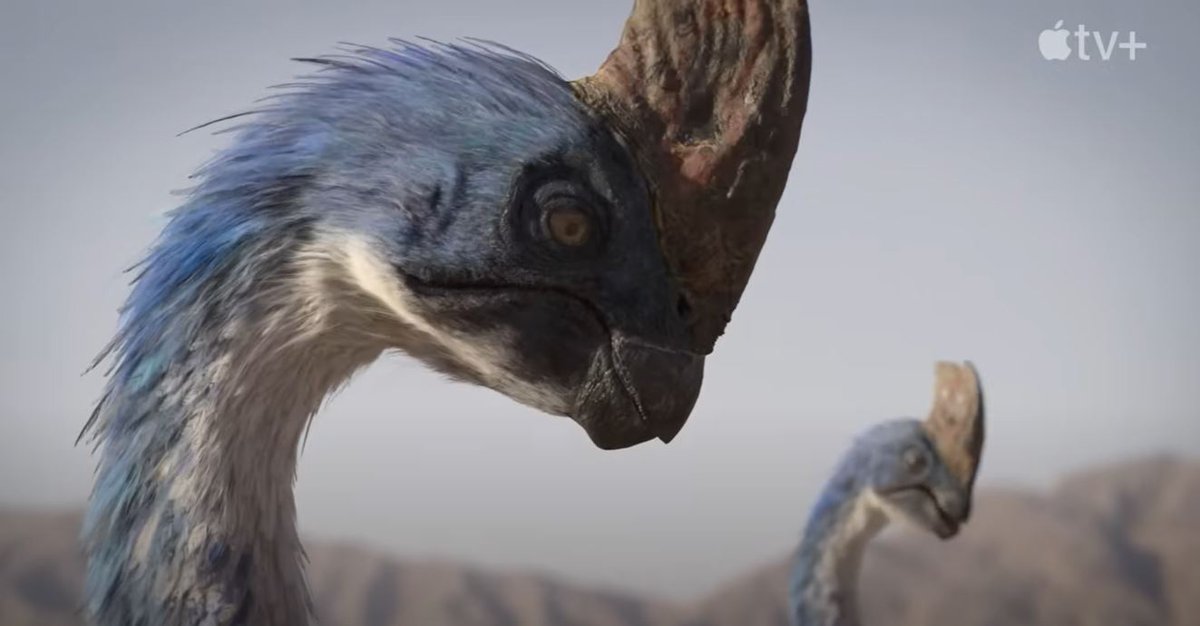

It is acceptable, however, to infer that its range might have extended that far. The oviraptorids are shown nesting colonially, sitting on top of their egg-filled nests. Corythoraptor nests and eggs are unknown, but nests and eggs are well known for other members of their group. 

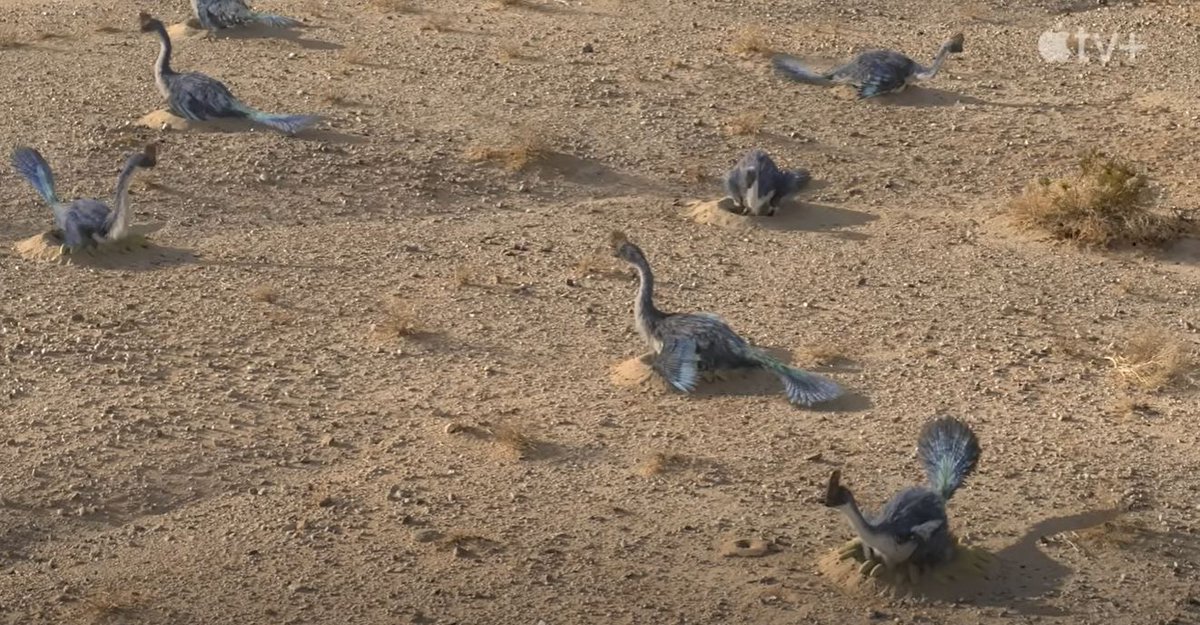
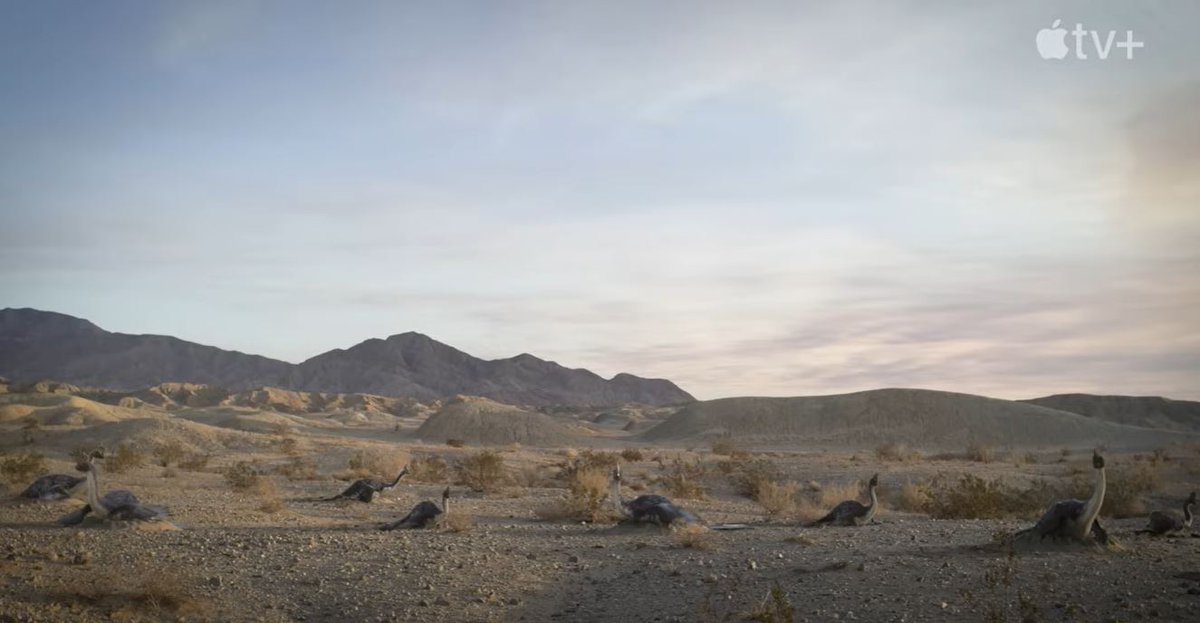
Their nests are circular and the eggs were laid on their sides, around the raised outer edge. A brooding parent, sitting with legs folded, would be able to cover all the eggs with its wing, body and tail feathers. A few fossil specimens are preserved in this pose.
At one point in the sequence, a Corythoraptor is shown picking up and manipulating its egg. That's a mistake made by a member of the team during filming. We don't think that they did this owing to the precise arrangement that was set up when the female did the laying. #dinosaurs 
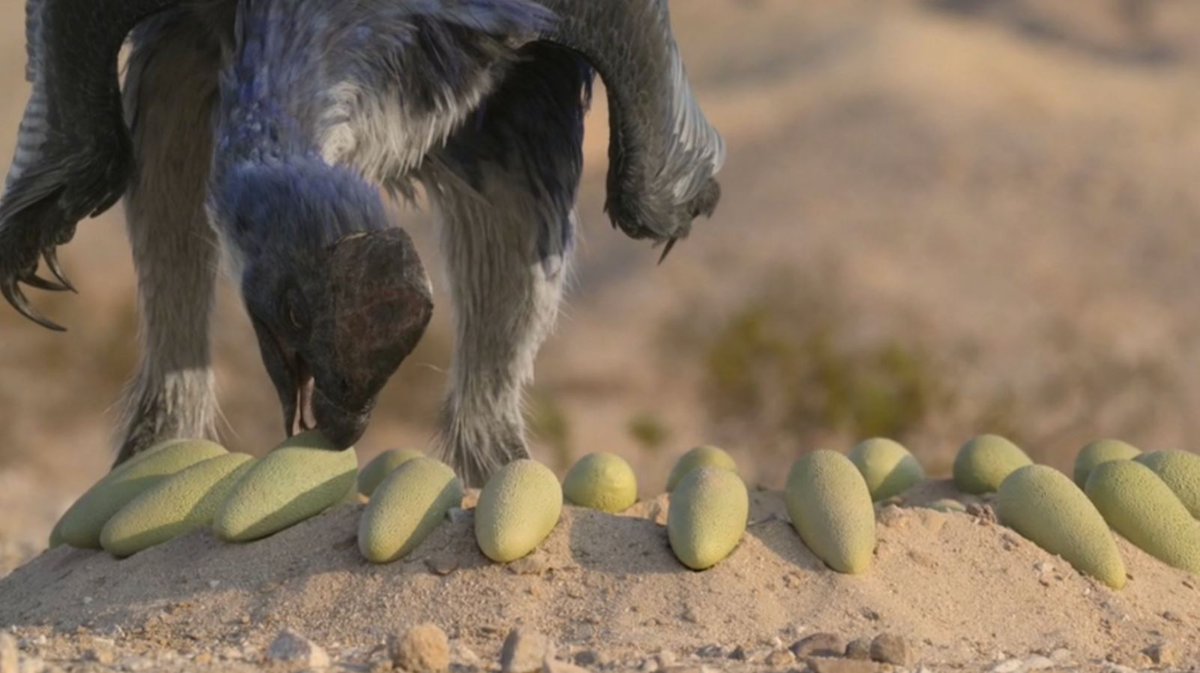
Also starring in this sequence is another velociraptorine. Here, we decided to state that it's a different taxon from #Velociraptor, and we opted to go for Kuru kulla, which was brand new at the time of making the show (it was named by James Napoli and colleagues in 2021). 



Producer Paul Thompson and I discussed various plans on how we might show Kuru stealing eggs, and we initially wondered about the dinosaur holding an egg in clasped hands, or...
... by clutching it against the side of the body as suggested by Phil Senter in his studies of theropod forelimb pose. Those ideas looked a bit silly and we ultimately went with the idea that objects would be held in the mouth. 
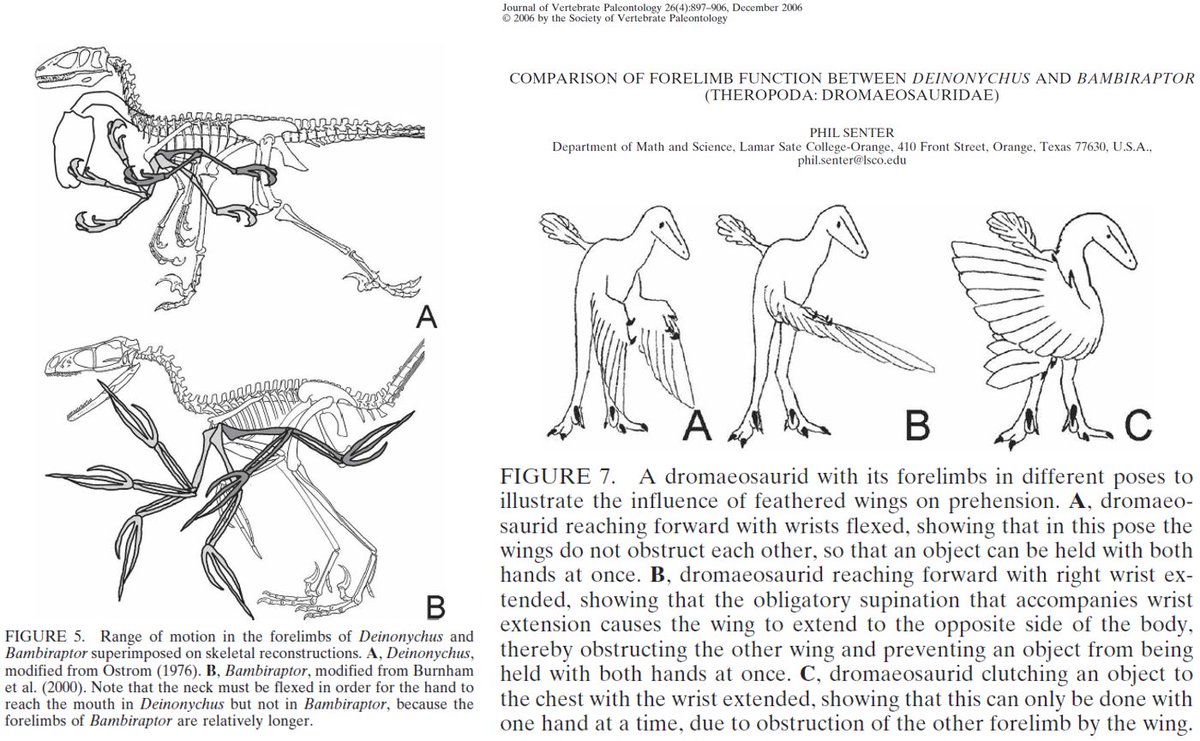
The fact that we see velociraptorines steal and eat eggs reflects my hypothesis (discussed in my podcast but not committed to print) that the abundance of eggs in Mesozoic ecosystems would likely result in the prevalence of egg-eating as a common behaviour among #dinosaurs.
Even #dinosaurs lacking obvious anatomical adaptations to egg-eating, I submit, would have been familiar with eggs as food items and probably behaviourally hard-wired to the stealing, breaking open, and consumption of eggs. 

Staying with the Gobi Desert, we next look at the ankylosaurid Tarchia. Reconstructing this animal was tough because there's still all too little info out there on the species-level variation, what the skull armour was like and so on. 
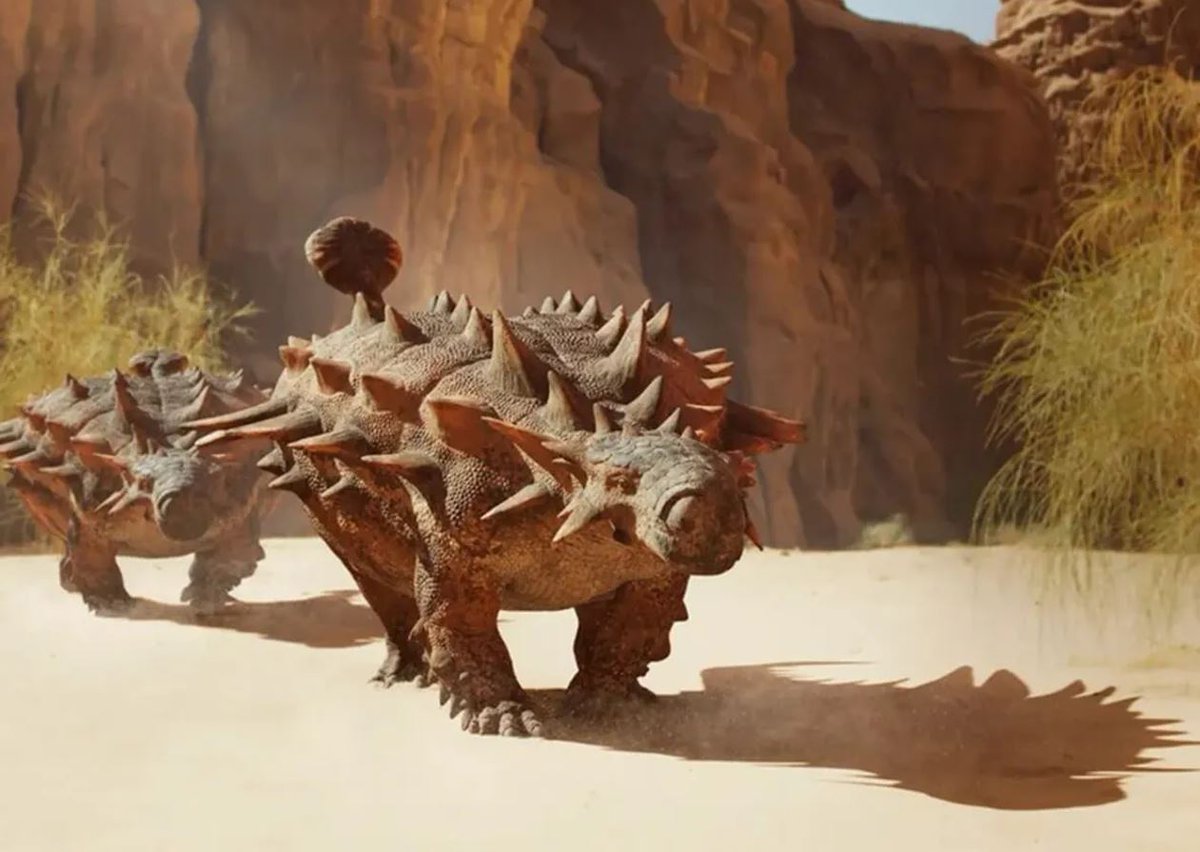
There _were_ Gobi ankylosaurids that looked like this, but it's possible that some of the details we show aren't right for Tarchia specifically.
Several aspects of the design reflect specific decisions relating to ecology and behaviour. I devised an initial look but this was replaced by a much better one created by Gabriel Ugueto @SerpenIllus, and then very faithfully made photo-real by the team at MPC. #dinosaurs 



@SerpenIllus We don't know for sure that these animals were desert specialists, but we reasoned that their integument and colours should link to high UV exposure, to walking on dry, rocky surfaces, and to moisture conservation. This explains the distribution of various dark and pale markings.
@SerpenIllus Ankylosaurid faces – and especially noses – are remarkable and it was decided early on to focus on the unusual, complex snout. We don't know precisely what the external covering of the massive bony nostril openings was like but... 


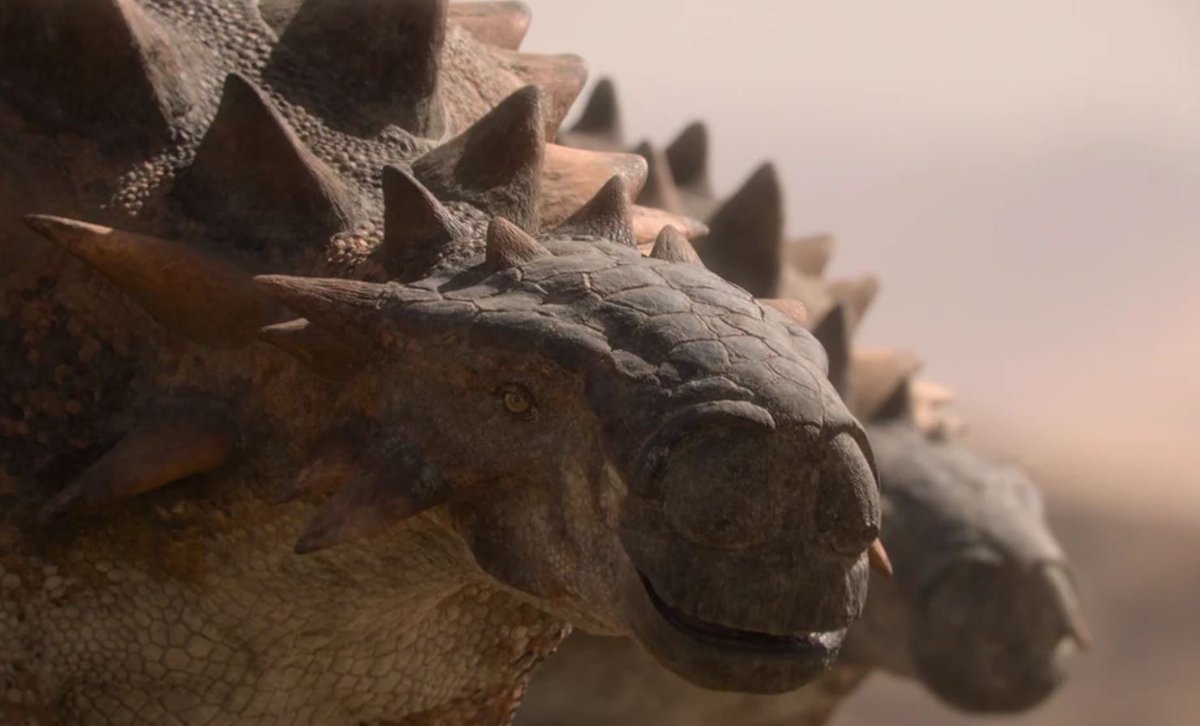
@SerpenIllus ... decided that a convex, shield-like covering, bordered at its upper end by an overhanging scute, surrounded the fleshy nostril itself, and that the latter had mobile edges where a shutter-like flap could seal it when required… 
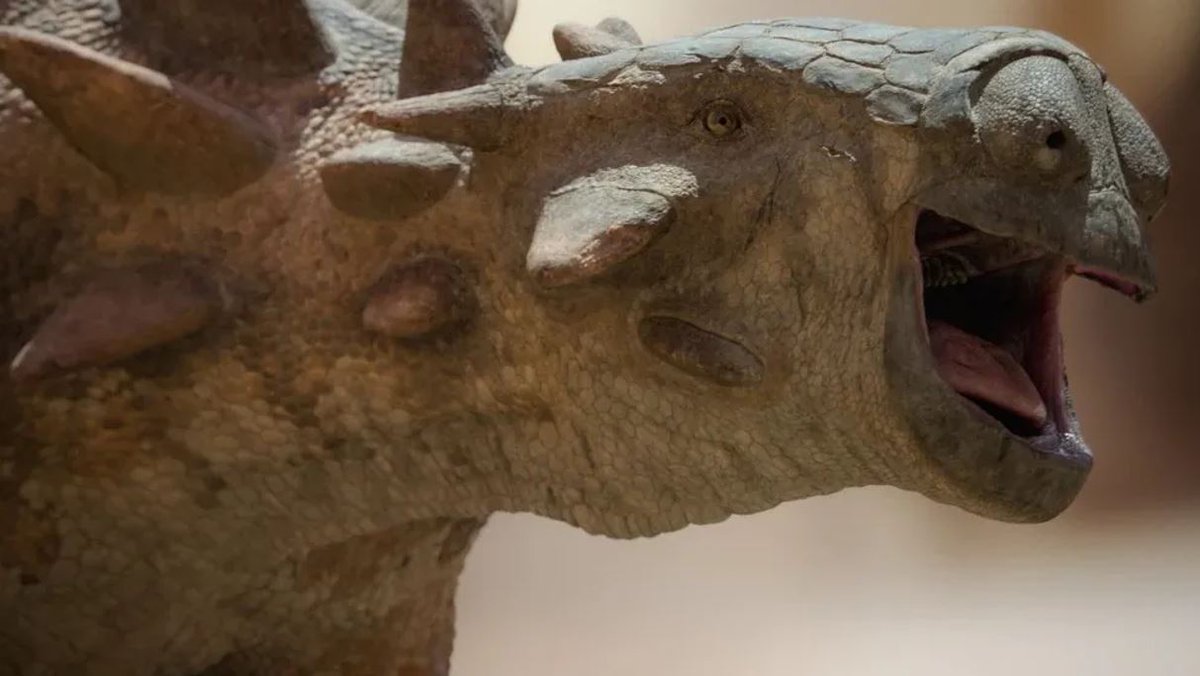
@SerpenIllus This was modelled on the muscular, mobile nostrils of crocodylians. This hypothesis of mobile nostrils was then transplanted to our other dinosaur designs… and that's something I now regret, since it's likely wrong for the majority of them.
@SerpenIllus Our story always involved related Tarchia individuals, and this is based in part on the discovery of ankylosaurid individuals in close proximity. Like many #dinosaurs, it seems that nestlings lived together throughout young life, and possibly remained associated in adulthood. 
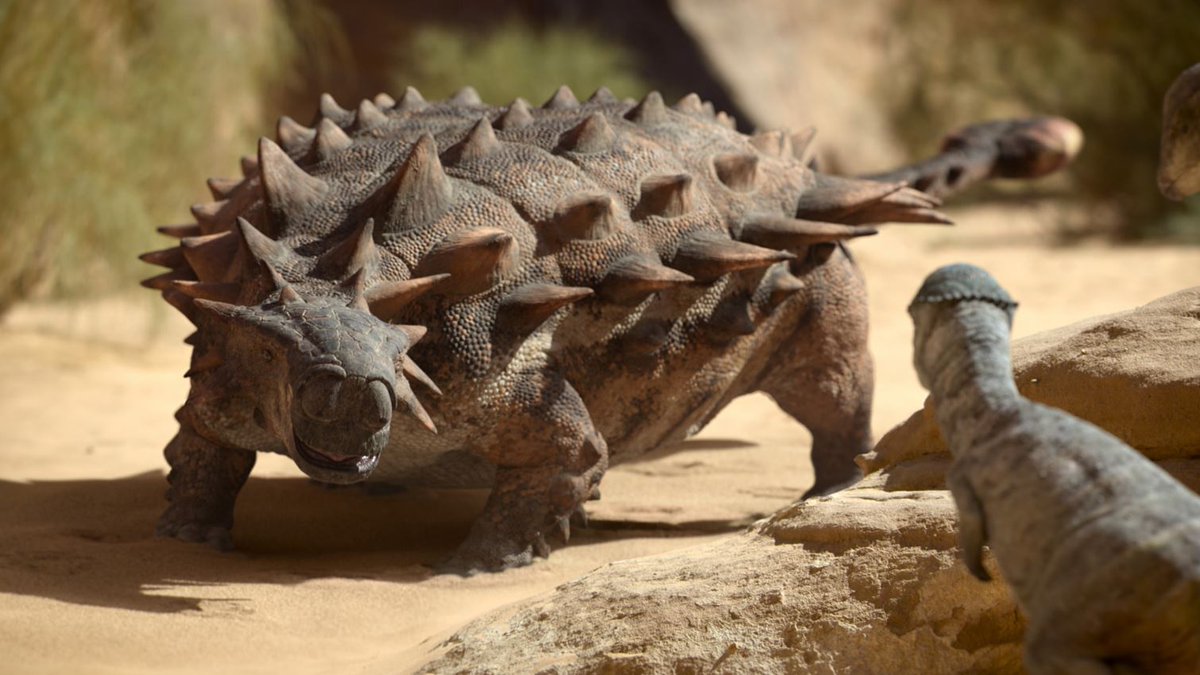
@SerpenIllus Dom Walter, the producer here, developed the idea of these animals gathering at a secluded 'spa' in a protected valley, and wanted our main characters to confront an antagonist _and_ deal with a group of annoying small dinosaurs.
@SerpenIllus Prenocephale got used for this and initial versions of the story involved the pachycephalosaurs being a lot more vigorous in their defence of the pool. 

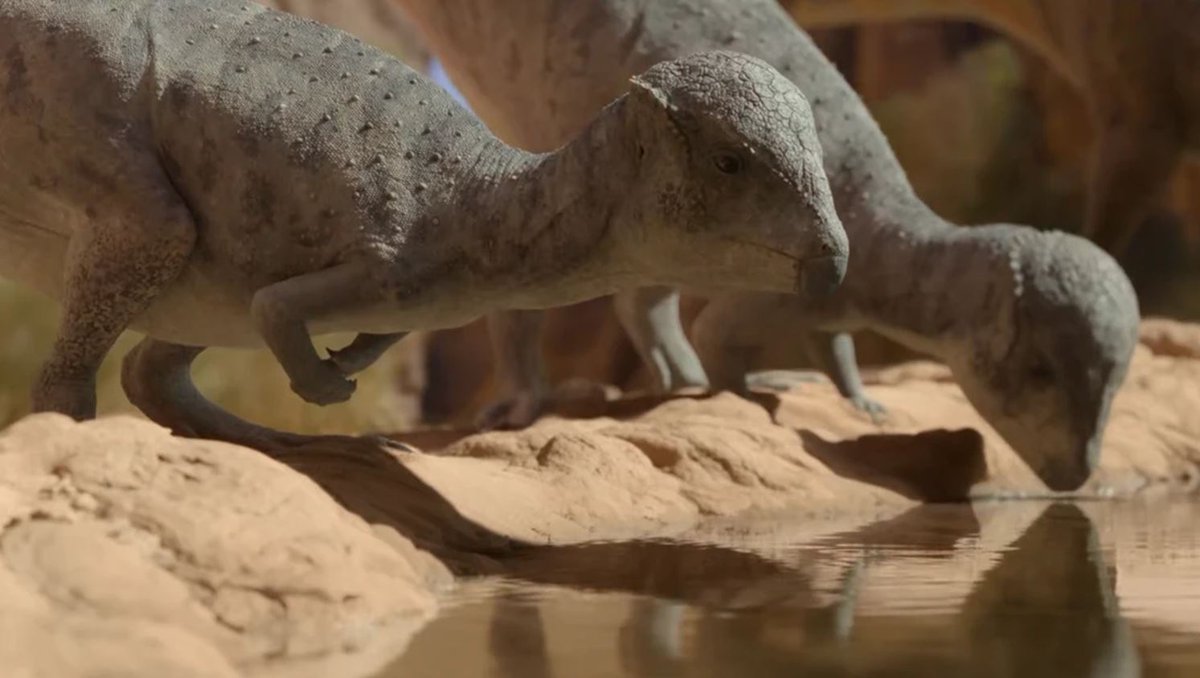
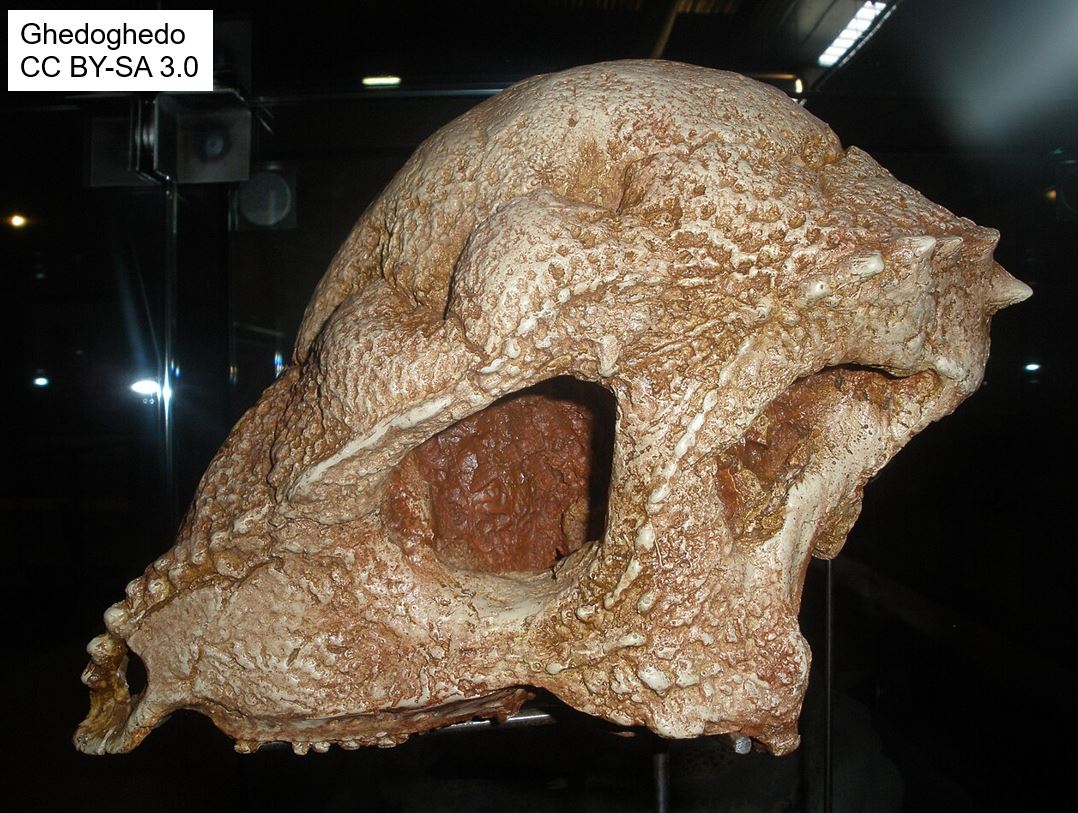
@SerpenIllus Ankylosaurid ankylosaurs like Tarchia are such a bizarre shape that they present a real challenge when it comes to the devising of a working gait. We managed it, but there were a few times where the width of the body made it difficult to get the legs and feet properly placed...
@SerpenIllus ... according to what we know from ankylosaur trackways. I did not envy the team at MPC who had to put in extra time to get the results we did!
@SerpenIllus For the final sequence of the episode, we return to Isisaurus and watch the behaviour of the hatchlings. We currently think that post-hatching parental care was absent in sauropods and that babies dug up through the sediment and emerged simultaneously... 

@SerpenIllus ... a common 'predator swamping' strategy seen in reptiles today. Babies synchronise hatching and other aspects of behaviour by 'talking' to each other. And this isn't just a bird thing, we know of turtles that do it too. 

@SerpenIllus The look of our baby isisaurs incorporates data – published in 2020 by Martin Kundrát and colleagues – on the horn-like eggtooth of hatchlings, and on their surprisingly proportioned faces. It seems that their eye position and visual field was quite different from that of adults. 

@SerpenIllus We show the babies making their way to the cover of forested habitats, and this is where they would have made a living until reaching large size. This model is inferred from fossil evidence and also incorporates clues from living animals, like iguanas, sea turtles and megapodes.
@SerpenIllus Like living hindgut fermenters, #sauropods surely pooped a lot, and a nesting site would likely be scattered with dung just like other places frequented by these animals. For hatchlings, this was a good thing, for two reasons…
@SerpenIllus Dedicated herbivores need symbiotic micro-organisms for their digestive systems to work, and the babies of such species therefore indulge in coprophagy as a means of inoculating themselves. Yes, baby animals eat their parents' dung early on in life.
@SerpenIllus We show this in the sequence, perhaps the first time that coprophagy has been depicted in baby #dinosaurs in a TV series.
@SerpenIllus The ingestion of parental dung has a second function in living reptiles: babies ingest the pheromones produced by their parents and are therefore chemically keyed-in to their parents' whereabouts. This might be how they locate them once they reach larger size later in life. 
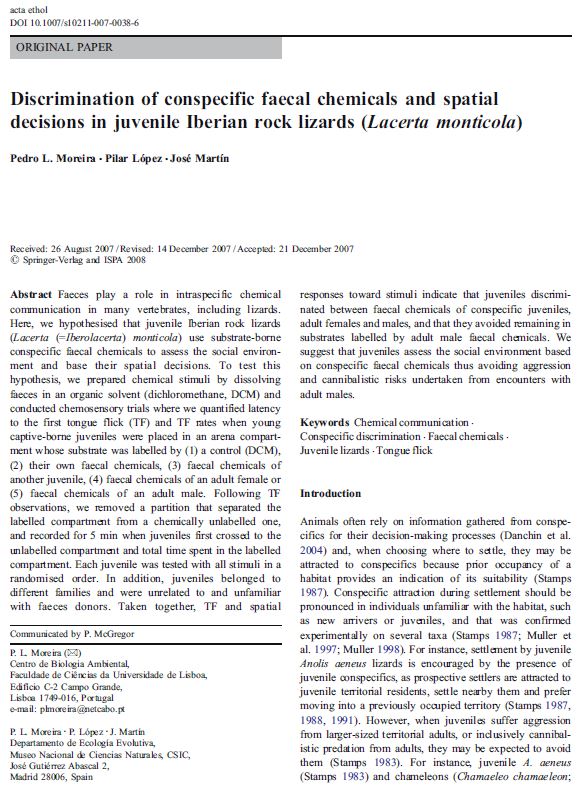
@SerpenIllus The sequence isn't just about Isisaurus hatchlings, but also about their potential predator, the large theropod Rajasaurus, named from India in 2003. Rajasaurus is an abelisaurid (and thus related to the Argentine #Carnotaurus featured in series 1)... 
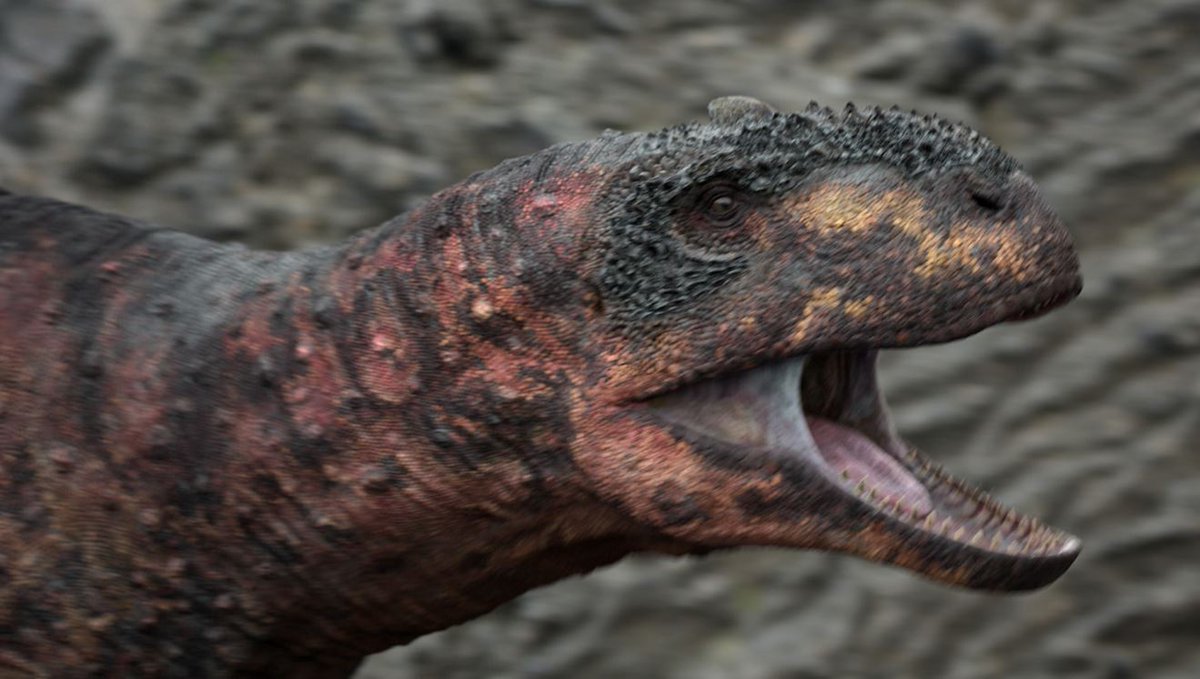
@SerpenIllus It possessed the broad, robust skull, powerfully muscled neck and reduced forelimbs typical of the abelisaurid group. 
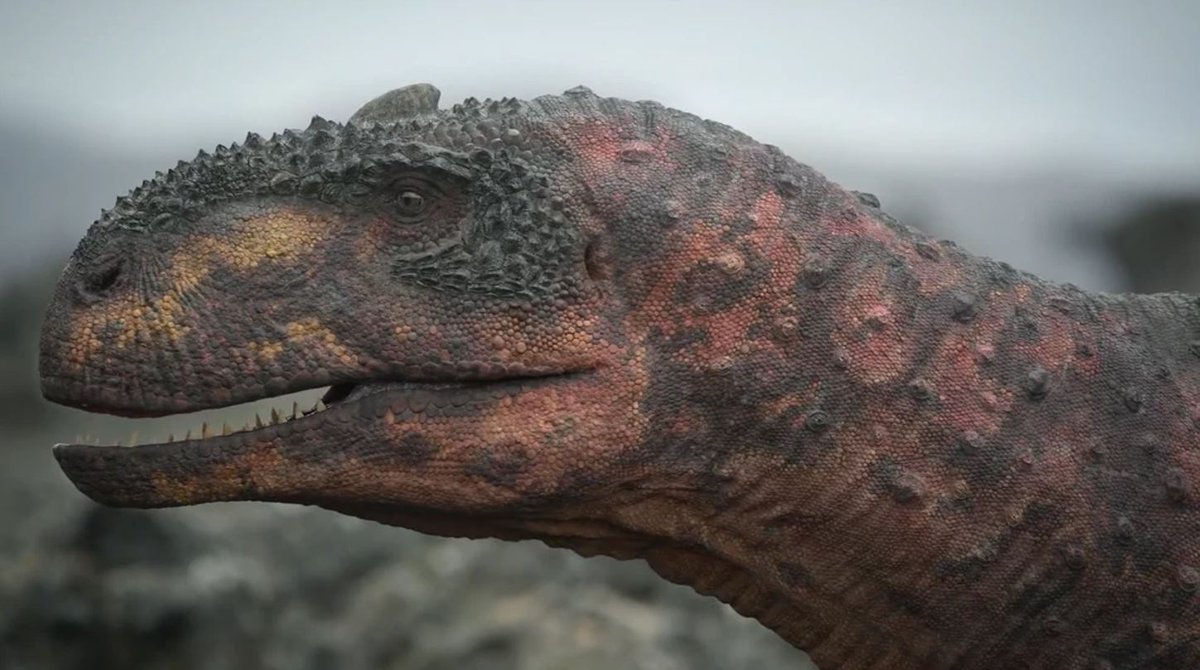
@SerpenIllus This time round (in contrast to our season 1 #Carnotaurus), we were able to get the scalation right, since the preserved skin of Carnotaurus implies that abelisaurids as a whole had large, flat feature scales scattered across their skin. #dinosaurs 

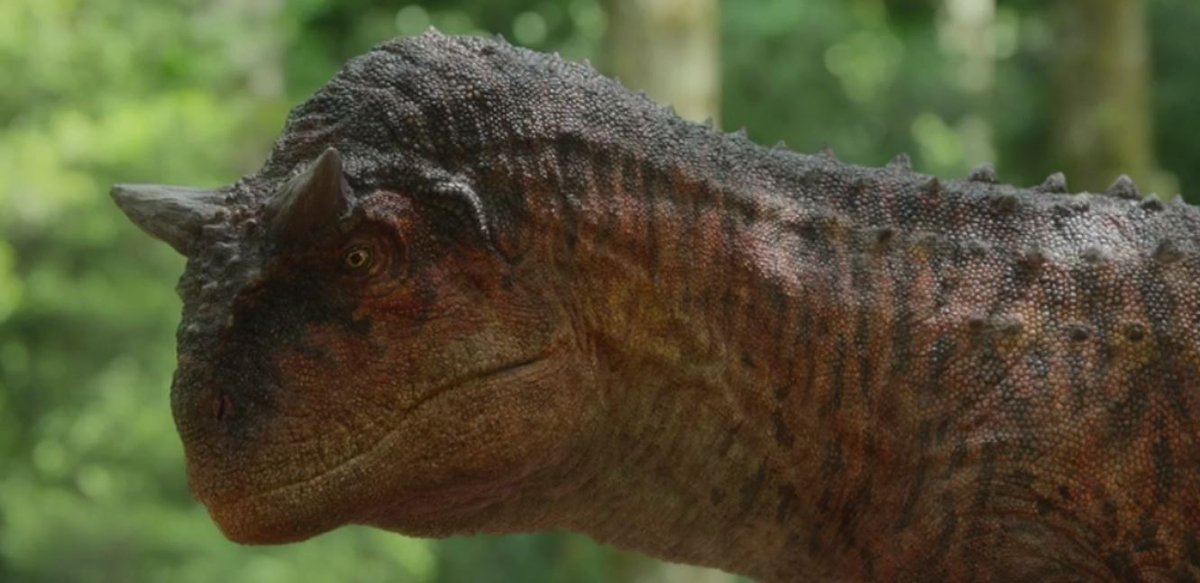
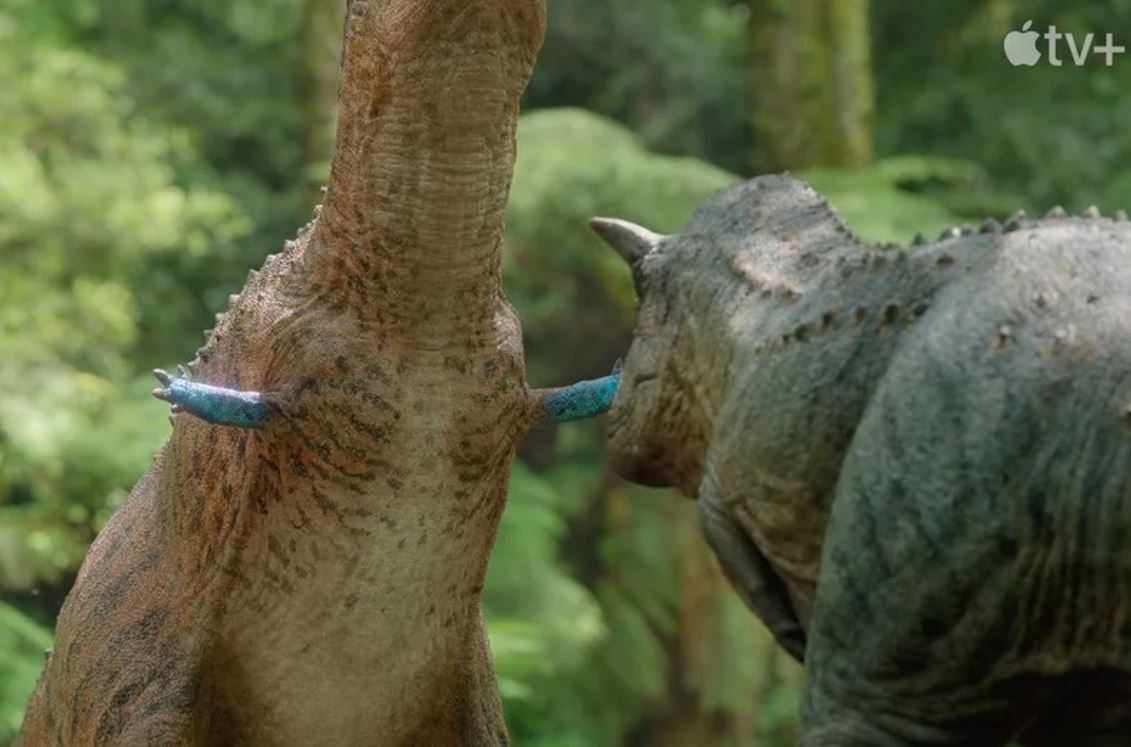
@SerpenIllus This is another dinosaur where I did the initial design (here's a reworked version by concept artist Chris Tulloch McCabe), and again we have the joke within our team that I was only able to design #dinosaurs that were black and red. It's true, my colour vision isn't great. 

@SerpenIllus Here we have to find the middle ground between conveying the fact that numerous dinosaur hatchlings would die _with_ the high inherent cuteness factor of the animals, a tricky endeavour. The baby kill count in this sequence is pretty high. It's not that I _dislike_ kids…
@SerpenIllus The dilemma is beautifully illustrated in this excellent video and song by The Kiffness… #PrehistoricPlanet #dinosaurs #sauropodstiktok.com/@thekiffness/v…
@SerpenIllus Despite rajasaurpocalypse, the sequence ends as a good number of babies successfully make it to the edge of a forested region. We speculate that youngsters remained in such environments, living in their familial groups and remaining concealed from predators as best as possible...
@SerpenIllus .... until they were about equivalent in size to rhinos and elephants, at which point they presumably moved into more open habitats and joined adult herds.
@SerpenIllus And thus Badlands comes to an end, what a triumph! As ever, threads on the other episodes of season 2 are coming as soon as time allows. As with all #PrehistoricPlanet eps, we did >>TONS<< of work that didn't make it to the screen...
@SerpenIllus I will end by showing my homeboy Brendan (with beard) with the late Jez Gibson-Harris of Crawley Creatures, who sadly passed away in 2024. #PrehistoricPlanet is streaming now on #AppleTV, be sure to watch it! Until next time... 

• • •
Missing some Tweet in this thread? You can try to
force a refresh



